
- Date Converter
- Nepali Unicode
- Preeti to Unicode
- Unicode to Preeti
- Digital Marketing
- Entertainment

Essay About Dashain Festival

Dashain festival is one of the greatest festivals in Nepal. It is celebrated with great joy and jubilation. Dashain is celebrated by the Hindu followers all over Nepal. It is the festival that brings happiness and delivers the message of unity among people. This festival signifies unity, the victory of truth, and the inception of happiness.
Dashain generally falls in Nepali Month Aswin( September ) lasts for 10 days. Each day has special rituals and activities to be performed. The festival starts from Ghatasthapana and ends at Vijaya Dashami. On Ghatasthapana, people sow rice and barley seeds on the pious corner of their house to grow seedlings called Jamara.

The first nine days of the festival are popularly called Navaratri. The goddess Durga is worshipped during this period. The 7th day is known as Fulpati and on this day Jamara is brought to the Hanuman Dhoka, Kathmandu from the Gorkha Durbar with the help of the priest. From Fulpati (8th day) until the 9th day, people sacrifice goats, ducks, buffaloes, and other birds & animals to the Goddess Durga. They worship the image of the Goddess Durga, some even visit temples. They do so wishing her blessing for power and prosperity. The main day of the Tika ie. the 10th day is called Vijaya Dashami.
On this day, people receive Tika( red-colored rice seeds ) on their forehead, Jamara on their head along with the blessings of the elder ones. They get blessings for good health, happiness, progress, prosperity, and longevity. People wear new clothes, visit relatives and enjoy delicious food items .
Dashain festival marks the victory of truth over untruth. With regard to this, Hindu scripture defines the two events as the starting of the celebration of the festival. The first one is when the cruel demon, Mahisasur was killed by the Goddess Durga. After this victory, the Dashain festival is believed to be started. Another one is when Ramchandra and Sita returned to Ayodhya after killing the evil Ravan who had kidnapped Sita. The celebration of Dashain has social and religious importance. It is an occasion of peace and goodwill.
📌 Another Essay – Essay on Importance of English Language
It is the festival in which family members gather and enjoy together. They forget their worries and indulge themselves in feasting and joy. Schools, offices, organizations, etc. remain closed during the time and people far away return back home for the festive celebration with their kith and kins. Despite this, Dashain has a dark side too. Numerous birds, animals are killed mercilessly. People engage themselves in taking drinks, different beverages, gambling, and so on. Some people even celebrate in an expensive and pompous style being in prolonged debt. Indeed, celebrating festivals like Dashain gives us complete joy and spreads a true message of brotherhood.
Other Essays
- Essay on Dashain – 800 Words
- Essay on Tihar – 800 Words
- Essay in Importance of Education
Share this:
Read also related posts, privacy overview.

200, 300, 400, & 500 Words Essay on Dashain Festival in English
Table of Contents
Introduction
Diet is an intricate part of Dashain celebrations for Nepalese. Sometimes it occurs in late September, but usually in October. There are many festivals in Nepal, but this is the most significant and longest. In addition, fruits, vegetables, and other foods are abundant during this time of the year. All of the animals receive a healthy diet and are in good health. The Dashain festival is said to celebrate the demons’ victory over the gods.
200 Words Essay on Dashain Festival in English
Dashain is celebrated during this time by Hindus. October is the autumnal month when it falls. A fifteen-day festival is held during this time. Vijaya Dashami and Bada Dashain are also popular names for Dashain. Numerous pujas and offerings are offered to Goddess Durga during Dashain. The celebration brings together people from around the world and from all over the country. Governing bodies and educational institutions are closed.
As the tenth day of Dashain approaches, Vijaya Dashami becomes increasingly meaningful. The elders bless people on this day by giving them tika, Jamara, and blessings for their health and progress. Children wear the latest fashions. Playing swing makes them merry. It appears that people are cheerful and happy. Best wishes and greetings are exchanged.
Ram’s victory over Ravan is commemorated by this festival. Durga, the goddess of goodness, is believed to have blessed Lord Ram with her blessing to enable him to win the battle. The essence of the celebration, however, is the triumph of good over evil. As part of this festival, families, and communities gather to renew ties, as well as to gather together for fun.
300 Words Essay on Dashain Festival in English
Nepal is a secular state, having 125 ethnic groups, subcastes, and religions, and celebrating its Dashain Festival today. Despite its small size, Nepal is quite interesting due to its cultural heritage and tradition.
It is imperative to keep multiple aspects in mind when celebrating Dashain. People gather in Nepal to celebrate Dashain in a festive atmosphere where they can meet and get to know each other.
It is dedicated to the Goddess Durga in Nepal during the Dashain festival. The festival takes place at the end of September or the beginning of October. All things in the world are said to have been created by Brahma. During this festival, people celebrate in hill stations all over Nepal. There are colorful fairs and dances to remember and enjoy during the festival.
In Nepal, Dashain is celebrated by making offerings to the goddess Durga Mata such as Jamara, meat, and red tika. Goddess Durga receives sweetmeats, jamara, and other treats as offerings.
You are supposed to bring delicious and tasty sweets to the Lord of the universe and the Goddess in order to appease them. There is no requirement to offer meat to Goddess Durga’s temple. Everyone is allowed to eat them wherever they want since they are distributed everywhere.
The Dashain festival of Nepal does not only include meat offerings, jamaras, and tikas, but also other traditional rituals. The occasion is celebrated with prayers and songs by family, friends, and elders. The celebrations also include the worship of several deities. Rama and Durga Mata are among the deities worshipped during the Dashain festival.
Nepal’s Dashain festival is celebrated with much enthusiasm and vigor, with a variety of festivities and rituals.
400 Words Essay on Dashain Festival in English
A festival with the same significance as Dashain takes place in Nepal every year. Joy and jubilation accompany the celebration. Nepalese Hindus celebrate Dashain every year. During the festival, people unite in spirit and bring happiness to each other. As a celebration of unity, truth, and happiness, this festival signifies the birth of unity and the triumph of truth.
In Nepal, Dashain takes place during the month of Aswin (September). Rituals and activities are performed every day. Vijaya Dashami follows Ghatasthapana. On Ghatasthapana, people plant rice and barley seeds, known as Jamara, in their pious corner. A popular name for the festival is Navaratri, which lasts for nine days. This period is dedicated to the worship of Durga.
Fulpati is the day on which Jamara is brought from the Gorkha Durbar to the Hanuman Dhoka, Kathmandu, with the priest’s help. A goat, duck, buffalo, and other birds and animals are sacrificed to Goddess Durga between Fulpati (the 8th day) and the 9th day. Some even visit temples to worship Durga’s image. In doing so, they wish her prosperity and power. On the 10th day of the Tika, which is called Vijaya Dashami, there is a festival called Tika.

This day is marked by the blessing of the elders as well as the imposition of Tika (red-colored rice seeds) on the forehead and Jamara on the head. In addition to blessings for health, happiness, progress, wealth, and longevity, they also receive blessings for longevity. In addition to wearing new clothes, visiting relatives and enjoying delicious food, people also wear designer shoes.
Truth triumphs over untruth at Dashain festival. The Hindu scriptures define these two events as the beginning of the festival celebrations. Goddess Durga killed the cruel demon Mahisasur in the first instance.
It is believed that the Dashain festival began after this victory. Similarly, when Ramchandra and Sita returned to Ayodhya after destroying Ravan and rescuing Sita from the evil Ravan. Dashain is an occasion for celebration both socially and religiously. Goodwill and peace are the underlying themes of the occasion.
- 50, 100, 200, & 500 Words Essay on Draupadi Murmu in English
- 300, 400, And 500 Words Essay On Azadi ka Amrit Mahotsav in English
500 Words Essay on Dashain Festival in English
Bada Dashain or Vijaya Dashami are also terms used for Dashain. Hindus generally celebrate it around Ashwin or Kartik, the lunar month of October or the Nepali year.
It is celebrated as a symbol of virtue or truth triumphing over sin or falsehood. As per Hindu mythology, the Dashain festival celebrates the victory over Ravan and demons by Lord Ram and Goddess Durga. Strength is associated with Durga.
Although all fifteen days of the Dashain festival are significant, not every day is equally significant. As part of Ghatasthapana, people sow barley, maize, and wheat seeds in dark corners to grow yellow. ‘Jamara’ is the name given to the seedlings.
Phoolpati is the seventh day of the week. This day is dedicated to the worship of ‘Goddess Durga’. It is common for people to bring owners and fruits. Maha Ashtami and Maha Navami are the eighth and ninth days of the festival, respectively. This day is celebrated by people offering sacrifices of different animals, including goats, he-buffaloes, and others.
On the tenth day of Dashain, known as Vijaya Dashami, there is a great deal of celebration. A ‘Tika’ is placed on the forehead and a ‘Jamara’ is placed over the ear of every junior member by their elders. They receive blessings for their well-being, health, prosperity, and longevity on that day. Dashain is bid farewell on Kojagrat Poornima, the last day of the month.
It is customary for Nepalese schools and offices to remain closed for at least ten days during this festival. This festival is celebrated with family by those who are away from home. People seem to be happy, and the weather does not appear to be too cold or too hot. There is a lot of enjoyment in eating different delicious foods, wearing new clothes, playing swings (ping pong), etc.
The greatest joy Tika brings to children is receiving their first clothes and crisp notes. Family members share their experiences together. Through this festival, we have the opportunity to strengthen brotherhood, mutual cooperation, and goodwill between people.
Some people see the Dashain festival as a competition by borrowing money, but it helps enhance our joy. Depending on the size of our throat, we should swallow the bone. During the festival, innocent animals should not also be sacrificed in the name of goddess Durga. If we kill our evil thoughts and behaviors, goddesses will not be satisfied; rather, they will be satisfied if we kill our evil thoughts and behaviors. It is only after that that everyone can have a blissful Dashain.
Conclusion,
During the Dashain festival, justice triumphs over injustice. In order to rescue Sita, Lord Rama attacked Ravana’s demon. Nepal celebrates Dashain to commemorate this victory.
50, 100, 200, & 500 Words Essay on Swami Vivekananda In English
100, 150, & 300 Words Essay on ‘Nation First, Always First’ Theme in English
Leave a Comment Cancel reply
Save my name, email, and website in this browser for the next time I comment.
- WishesinEnglish
- Birthday Wishes
- Hindi Wishes Shayari
- Nepali Wishes Shayari
- Write for us
- Mother’s Day 2024
Essay on Dashain Festival For Kids & Students Of School & College
Essay on dashain 300 words.
In Nepal, the most significant celebration of Hinduism is called Dashain. It has several names, including Vijaya Dashmi, Dashsera, Durga Puja, and Dasain. The celebration begins on the first day of October and continues for more than 15 days, during which time it is celebrated with equal parts devotion and enthusiasm.
When the Dashain Festival is not observed properly, it results in a great deal of difficulty. The people’s erroneous interpretation of the festival, improper planning of the celebration, and the fact that the festival is held in a location that is geographically remote from places of worship are some of the primary contributors to the festival’s erroneous perception.
The festival was not successful as a result of all of these factors. The following is a list of arguments in favor of your attending the festival’s events:
The celebration celebrates the triumph of the goddess Durga and Lord Rama over every evil force that exists in an individual’s life. It also signifies the end of life as we know it. This is referred to as the “Dashain” holiday. A narrative about Lord Rama and the goddess Durga Mata can be found in several Hindu kinds of literature.
People attend temples and adorn their homes in preparation for the celebration. They bring Jamara, garlands, and lotus blossoms along with them. Lotus flowers are used to adorn the garlands, which are then hung on homes, temples, bridges, statues, and idols. People dress in their national costumes, which are meant to represent proper attire. This event is celebrated with a variety of dances and musical performances during its duration.
Advertisement
Most individuals invest a significant amount of financial resources into preparations for the Dashain celebration. At the festival, attendees will be responsible for manufacturing a variety of things, including but not limited to handicrafts, decorations, paper, cloth, etc.
Vijayadashami is a festival that is celebrated with tika and Jamara on the tenth day of the Dashain festival. The younger was fortunate enough to get the elders.
Essay on Dashain Festival For Kids & Students Of School & College
Essay on dashain festival [1200 words]:-.
Dashain is the biggest festival in Nepal, along with Tihar (festival). Dashain is celebrated by Buddhists, Hindus, and Kirats of Nepal, as well as by the Nepalese-speaking Gorkha Indians of Darjeeling Hills, Sikkim, Assam, and other northeastern states of India and other Bhutan Lhotshampa and Burmese Gurkhas of Myanmar.
It is the longest and most auspicious festival on the annual calendar of Bikram Sambat and Nepal Sambat, which is celebrated by Nepalese in the country and around the world.
It is the most anticipated festival in Nepal , Bhutan, Burma, and northern India’s hills. People from all over the world and from different parts of the country, return to celebrate this festival together with their families.
All government agencies, educational institutions, and private companies will be closed during the ten-day festival. Dashain falls in September or October, beginning with the Shukla Paksha (14-day lunar glow) of the month Ashwin and ending in Purnima, the full moon.
Among the fifteen days in which it is celebrated, the most important days are the first, the seventh, the eighth, the ninth, the tenth, and the fifteenth.
In the Neva of the Kathmandu valley in Nepal, Dashain, traditionally known as Mohani (Newar: मोह्मोह), is celebrated as the most important festival of the Nepalese calendar year Sambat.
The Hindu and Newarene are celebrated with slight differences and interpretations, with Navaratri (Nepal Bhasa: नवरानवर्त), which leads to the tenth day called “Dashami” every nine days, which has a special meaning. Hindu Newars especially revere Goddess Durga and her various manifestations in the Shaktipeeths of the Kathmandu Valley.
Various processions of deities called Jātrā (Nepal Bhasa: जात्ता). In the three cities of the Kathmandu valley. Dashain symbolizes the victory of good over evil.
For the followers of Shaktismus, it represents the victory of the goddess Parvati. In Hindu mythology, the demon Mahishasura had created terror in Devaloka (the world where the gods live), but Durga killed the Rakshas (demons).
The first nine days of Dashain symbolize the struggle between the different manifestations of Durga and Mahishasura. The tenth day is the day Durga finally defeated him. For other Hindus, this festival symbolizes Ram’s victory over Ravan, as told in the Ramayana.
Day 1: Ghatasthapana
It means setting up a potash or a pot, which symbolizes the goddess Durga. On this day, the Kalash is filled with holy water and then sewn with barley seeds. Then, the Kalash is placed in the middle of a rectangular sand block.
The priest begins the bid by asking Durga to bless the ship with his presence. This ritual is performed on time, determined by astrologers. It is believed that the goddess is on the boat during Navratri.
The room in which this ritual takes place is known as Dashain Ghar. Traditionally, strangers cannot enter the room. A family member prays the Kalash twice a day, once in the morning and once in the evening.
The Kalash is protected from direct sunlight, and holy water is offered daily. On the tenth day of the festival, the seed grows up to five or six inches long yellow grass. This sacred herb is known as Jamara. These rituals last until the ninth day.
Day 7: Phulpati
Phulpati is a great celebration that takes place on the seventh day of Dashain.
Traditionally, the Brahmins bring the royal Kalash, banana stalks, Jamara, and sugar cane with red Gorkha cloth, a three-day walk, about 169 kilometers from the Kathmandu valley this day. Hundreds of government officials meet with conventional clothing on the Tundikhel grounds to witness the event.
The king watched the ceremony in Tundikhel, while the Phulpati parade led to the royal palace of Hanuman Dhoka. Then there is a majestic spectacle of the Nepalese army and a solemn shooting that lasts ten to fifteen minutes to honor Phulpati.
The Phulpati are taken to the Royal Palace of Hanuman Dhoka when the event ends in Tundikhel, where a parade takes place.
Since 2008, when the royal family was overthrown, the bicentennial tradition has changed to bring the sacred victim of Phulpati to the presidential residence. The president assumed the social and religious roles of the king after the overthrow of the royal government.
Day 8: “Maha Asthami”
The eighth day is called “Maha Asthami.” This is when the most fierce manifestation of the goddess Durga, the bloodthirsty Kali, is relieved by the sacrifice of buffalo, goats, chickens, and ducks in temples throughout the country. Blood, symbolic of their fertility, is offered to goddesses.
Timely, the night of this day is Kal Ratri (Black Night). It is also common for buffalo to sacrifice themselves that day in the yards of all state treasuries in the country. The ancient palace in Basantapur Hanuman Dhoka is active throughout the night in almost all courtyards with prayers and sacrifices.
At midnight of the same day, the Dasain Ghar, a total of 54 buffaloes and 54 goats, are slaughtered in compliance with the rites. After the blood sacrifice, the meat is taken home and cooked as “Prasad” or food blessed by God. This meal is offered on small plates to the house’s gods and then distributed to the family.
The food for this meal is considered cheap. During the presentation of the Puja, large festivals are held in the homes of ordinary people. The Newar community has an event called “Khadga Puja,” where they make their Puja weapons.
Day 9: “Maha Navami”
This is the last day of Navaratri. Ceremonies and rituals climax on this day. On this day, the official rituals of military sacrifice occur in one of Hanuman Dhoka’s royal palaces, the Kot-Hof.
On this occasion, the state offers buffalo sacrifices among the greetings by the greeting. This day is also known as Demon Hunt Day, as members of the defeated demon army try to save themselves by hiding in animals’ and chickens’ bodies.
10 Diwali Sweets Foods Recipes That Will Sure Boost Happiness in Your Family
In Mahanavami, Vishwakarma, the God of creation, is revered because he believed that all things that help us live must remain happy. Craftsmen, artisans, merchants, and mechanics love and offer their tools, equipment, and blood vehicles.
As it is also assumed that worshiping vehicles prevents accidents throughout the year, all vehicles, from bicycles to trucks, will be honored that day.
The doors of the Taleju Temple are open to the general public only on this day of the year. Thousands of devotees go and respect the goddess on this day. The temple is full of devotees all day.
Day 10: Bijaya Dashami
On this day, a mixture of rice, yogurt, and vermilion is prepared. This preparation is known as “Tika.” Often, Dashain Tika’s weather is different every year.
The elderly place this tika and jam planted in Ghatasthapana on younger relatives’ foreheads to bless them abundantly in the coming years. Red also symbolizes the blood that holds the family together. The elders give “Dakshina” or a small amount of money and a blessing to the younger relatives.

This is observed for five days until the full moon. During this time, families and families come to exchange gifts and greetings. This ritual of taking Tika from all older relatives (even from distant relatives) contributes significantly to community relations renewal. This is one of the reasons why the festival is celebrated with such enthusiasm and enthusiasm.
Day 15: Kojagrat Purnima
The last day of the festival, the full moon day is called ‘Kojagrat’ Purnima. The literal meaning of Kojagrat is “who is awake.” On this day, the goddess Laxmi is worshiped, who is considered the goddess of wealth.
She believes that Goddess Laxmi descends to the earth and showers, who is awake all night and has wealth. People enjoy the night playing cards, and much more.
Animal sacrifices are often the norm at this time, as the festival recalls the mythical bloody battles between “divine” and “demonic” powers. Proponents of animal sacrifice interpret this sacrifice as the symbolic sacrifice of our animal qualities.
Still, those who oppose animal sacrifice emphasize that sacrifice is nothing more than an excuse to quench food/meat appetite.
Essay on Dashain [200 words]
Dashain, also known as Bijayama Daśami, is a Hindu festival originating in Nepal. The festival is celebrated with a lot of pomp and joy. The celebrants are expected to wear many colorful clothes and carry colorful ornamental items and put Dashain Tika on the forehead.
The festival is believed to have originated around five thousand years ago. In some areas of India, it is also referred to as Dashera. In Nepal, it is known as Dashami.
In the Hindu religion, it is considered an auspicious occasion. It is observed on the last day of the summer season. The festival is dedicated to the Goddess of wealth and loves Lakshmi.
She is the main deity in the Hindu religion. There is a wide variety of costumes that are worn during this festival. The devotees wear long hair, which is pulled back in a simple bun. They wear bright orange-colored clothes and adorn themselves with flowers and ornamental items.
The Dashami festival is also referred to as Durga Puja. The devotees light a bonfire and pour a lot of garlands, flowers, and other floral designs. They sing and dance and display different kinds of offerings.
The most popular item being used for this occasion is a lotus. The bonfire is lit, and the celebrant throws lotus flower petals into the fire.
Essay on Dashain [50 words]
Dashain festival, also known as Bijayama Daśhami or Dasara is an occasion for celebrating the victory of Ram over Ravan. It originates in Nepal and is celebrated from August to November in Hindu regions. It is celebrated by putting Dasahmi Tika and Jamara to younger elderly people.
Essay on Dashain [100 words]
Dashain Festival, also known as Bijaya Daśamis, is an Indian festival that originated in Nepal. In India, it’s also known as Dasara. In Nepal, it’s also known as Vijayadashami. The Vijayadashami festival is celebrated on the 10th day of the Dashain as marks the beginning of harvest celebrations.
In Nepal it’s also celebrated on a particular day known as Dashami Day, people of Nepal engage with Jamara and Tika. It’s the largest Hindu festival and is observed on Ashoj and Kartik. Many Hindus believe that the entire harvest period has come to an end.
Related terms
- Essay on Dashain For Nursery
- Essay on Dashain For Class 2-3
- Essay on Dashain For Students
- Essay on Dashain 500 words
By Shishir Acharya
Related Posts
Essay about endless not equal.

Argument Essay About Conscious Consumerism

50 Happy Navratri GIF Images With Best Wishes Messages
85 happy maha navami wishes with images and cards.

100 Happy Durga Ashtami Wishes With Images, Cards, And Quotes
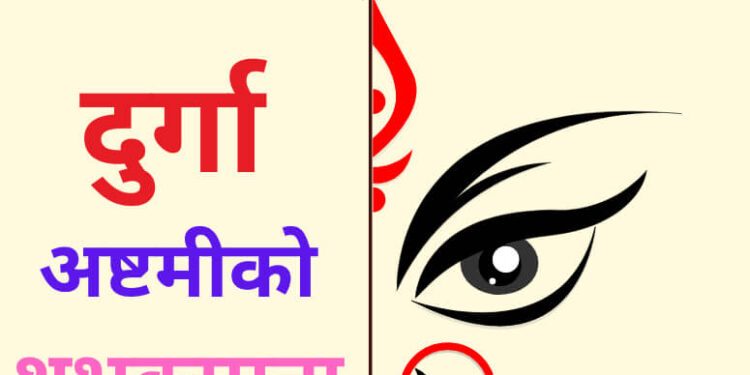
34 Happy Dashain Fulpati Wishes Images For This Year 2080

Recent Posts
- Tall and Tasteful: The Allure of Vertical Radiators in Contemporary Spaces
- Reasons to have travel insurance for your cruise trip
- Tips for Choosing the Best Online Master’s Program
- How to Complete Mobile Phone Number Verification without Using Your Own Phone Number
- Different Phases of Tail Spend Analysis

- Privacy Policy
© 2023 Wishes, Messages, Travel, Lifestyle, Tips in English, Hindi and Nepali Mount Everest. Legal Support by Quotes .
- Travel, Information And Lifestyle Blog For Nepal & Nepalese People
- Architecture & Design
- Travel & Tourism
- Opportunities
- Personal Finance
Dashain Festival: Nepal’s Greatest 10-day’s Festival with Delightful Blessing and Prosperity
Table of Contents
Nepal as a Miscellaneous Country for Cultural aspect
➤ Nepal is a miscellaneous and fascinating country with a beautiful culture shaped by its history and topography. The artistic legacy of Nepal is multi-dimensional and surrounds a broad scope of conventions and rules that have developed over the centuries.
➤ The country’s racial, tribal, and social classes contributed to this rich origin, represented through art, music, prom, literature, and declarations.
➤ Nepal’s mythology and folktales are also an indispensable component of its artistic legacy, delivering wisdom into the opinions and significance of its individuals.
➤ Religion recreates a meaningful function in Nepali civilization, with Hinduism and Buddhism as the primary religions.
➤ Festivals and celebrations are required in Nepali civilization, with per ethnical level containing excellent practices and patronages.
➤ Nepali cuisine is also an indispensable characteristic of the country’s culture, with a combination of knockouts and beverages that mirror the diversity of its people. From momos to dal bhat, Nepal is incredible.
Dashain: Everything you need to know
➤ Dashain is one of the famous and most significant festivals in Nepal that is typically known as Bada Dashain(वडादशैँ) or Vijaya Dashami(विजयादशमी) in Sanskrit.
➤ It is an influential Hindu religious festival memorialized in Nepal and miscellaneous Indian states like Sikkim, West Bengal, Assam, and South India.
➤ The festival is also commemorated by Hindus worldwide, having the Lhotshampa of Bhutan and the Burmese Gurkhas of Myanmar.
➤ The name “Nauratha” emanates from the Sanskrit phrase “Navaratri (नवरात्रि),” which indicates “Nine Nights,” and is employed to direct to this festival.
➤ An excellent performance of this celebration is commemorated as Navaratri, but it is not the same as Dashain.
➤ Dashain is the longest and most optimistic festival in the Bikram Sambat and Nepal Sambat annual calendars, celebrated by Nepali Hindus and their diaspora worldwide.
Most-Noted activities performed on Dashain
➤ The Malshree dhoon is one of the beautiful and soft devotional music of the Newa art form, initiated in the 17th century.
➤ It is now integrated into mainstream Nepalese music as the melody that declares the appearance of Dashain, a festival honored by all Nepalese.
Games and Carnivals:
➤ Kite flying and playing cards are more famous ways of celebrating Dashain in Nepal.
➤ Bamboo swings called ‘ping’ are assembled by community members and appreciated by people of all ages.
➤ Fairs and festivities are also scheduled during the celebration.
➤ During the festival, buying new dresses is meaningful. Many citizens below the poverty line can afford new dresses during Dashain.
➤ Shops offer festival discounts and make shopping more affordable and attractive. Clothes have the most heightened deals during this time.
➤ During Dashain, thousands of animals are slain in an essential ceremony to appease the divinities.
➤ The request for meat advances considerably during the festival due to the many feasts and conferences systematized throughout the fifteen days.
Brief Explanation about the Every Day of Dashain:
1st day, ghatasthapana (pratipada).
➤ Dashain starts on the ghatasthapana with the layout of a pot sufficed with sacred water, barley seeds, and other more optimistic entities, exemplifying goddess Durga.
➤ The pot is cultivated with barley seeds to mature into barley grass over the final day of Dashain.
2nd Day, Dwitiya
➤ People groom and cleanse their homes and light oil lamps to request praising energy on this day.
➤ They even gather the goddess Durga and portray practices to honor her.
3rd Day, Tritiya
➤ The day is incredibly devoted to the goddess Chandraghanta, a form of Durga. People idolize and worship her for strength and bravery.
4th Day, Chaturthi
➤ Enthusiasts celebrate Kushmanda Jayanti, devoted to the goddess Kushmanda, a form of Durga, imploring for wealth, prosperity, and good health.
5th Day, Panchami
➤ Skandamata, the mother of Skanda (Kartikeya), is honored for bravery and security on this day.
6th Day, Shashthi
➤ The day is typically dedicated to the goddess Katyayani, an influential form of Durga. People pursue her prayers for joy, delight, and satisfy their appetites.
7th Day, Saptami
➤ Navratri’s seventh day is primarily devoted to idolizing goddess Kalaratri, symbolizing Durga’s powerful and destructive aspect.
➤ Believers pursue their blessings for conservation from evil strengths.
8th Day, Ashtami
➤ Maha Ashtami is one of Dashain’s most potent days, dedicated to the goddess Mahagauri.
➤ Animal sacrifices are performed, and people worship Kalaratri and read the Ramayana during nighttime.
9th Day, Navami
➤ Navami is the second last day of Dashain. It is amazingly devoted to honoring the goddess Siddhidatri for spiritual and material prayers.
➤ In some precincts, books, vehicles, and tools are praised today.
Last Day, Vijaya Dashami
➤ On this day, Seniors apply tika and jamara to the foreheads of younger families, indicating and symbolizing blessings from goddess Durga.
➤ It is acknowledged to obtain security and good luck.
Blessing Matras with meaning while putting Tika on the forehead:
Mantras for males:, mantras for females:, dashain (दशैँ) and dakshina (दक्षिणा):.
➤ Dashain is the festival of win and success. However, Hindus receive tika on the last day, i.e., Vijaya Dashami with yellow jamara, and blessings from dignitaries.
➤ On this day, Dakshina (Some gifts or money with blessings) is also given to daughters-in-law, sons-in-law, nieces, and nephews.
➤ Dakshina civilization is expanding due to the increase in Dasavati traditions. It has become a mark of wealth and level.
➤ Dakshina, the tradition of presenting offerings to religious exponents or gurus, is acknowledged to have been initiated in the Vedic period. It commenced with the Yajnayajnadi, where debtors gave the Gurus cows, horses, gold, and money.
➤ Dakshina is cited in Vedic scriptures and Puranas as a practice to deliver delight for work accomplished. It signifies increasing karma. Wealthy people may give more Dakshina, while others can provide Patram Pushpam.
➤ Shakti (Goddess Durga) is honored and worshiped on Dasai, and Dakshina is delivered as Prasad. The King Maharaja utilized to give Dakshina after recounting Chandi. The Dakshina provided during the Tika of Dashain is the Bhuysi Dakshina delivered to daughters, wives, and people experiencing poverty.
➤ In Dakshina, cash is mainly utilized to convey more. Earlier, instead of Dakshina, many people presented yellow Jamra and blessings. Now, giving money has become a fashion.
Major Controversy about the Dashain Festival:
➤ The festival of Dashain in Nepal mainly affects animal sacrifice, which animal rights activists have belittled. Many online requisitions have been documented calling for government action against mass slaughter.
➤ The festival has also become controversial due to fights that have been inflicted on indigenous parties by the condition. Dashain and other cultural carnivals remain essential to the Nepalese lifestyle despite these debates.
Kali Gandaki River: Religious Importance, Electricity, Tourism attraction, and More
Nepal wildlife: most popular 14 wildlife, national parks, wildlife reserve, conservation areas, and hunting reserve, top 10 highest mountain in nepal, nepal democracy history: detailed overview with 19 best key summary.
- Login / Register

- Intenet & Communication
- Electronics
- Information Technology
- Data science and AI
- Biotechnology
- Marketing & Sales
- Startups & Business
- Imports & Exports
- Stock & Investment
- Manufacturing
- Hotel and Tourism
- Natural Resources
- Agricultural
Religion and Culture
- Metals & Mining
- Infrastructure
- Renewable Energy
Join Our Newsletter
Join our subscribers list to get the latest news, updates and special offers directly in your inbox
Dashain Festival in Nepal - A Comprehensive Guide
Discover the richness of dashain festival in nepal, with insights into regional variations, historical evolution, and its role in fostering community and cultural preservation, all in this comprehensive guide..

Introduction:
The Dashain Festival, also known as Vijaya Dashami, is one of the most important and widely celebrated Hindu festivals in Nepal. It's a 15-day extravaganza that usually happens in September or October. This festival beautifully weaves together history, culture, and religion, offering a captivating experience for both locals and tourists.
The Dashain Festival has its roots in Hindu mythology and tells tales of timeless battles between gods and the eternal struggle of good versus evil. At its core, Dashain celebrates the victory of goodness over wickedness through two fascinating stories.
In the first story, Dashain pays tribute to Goddess Durga. She was called upon by the gods to defeat Mahishasura, a demon king who had brought chaos to Earth. After nine days of fierce battle, Goddess Durga emerged victorious on the tenth day, symbolizing the triumph of virtue over evil. These nine days are celebrated with devotion as people worship her various forms, each representing different aspects of strength and divinity.
The second story is about Lord Ram, a revered figure in Hindu mythology, and his battle against the demon king Ravana. Ravana had kidnapped Lord Ram's wife, Sita, and imprisoned her in Lanka. Lord Ram waged a monumental war to rescue her, but his victory over Ravana only happened with the intervention of Goddess Durga. Her divine help empowered Lord Ram, leading to the defeat of Ravana and the rescue of Sita. The tenth day of Dashain, Vijaya Dashami, represents this legendary victory, symbolizing the triumph of goodness over darkness.
These stories capture the essence of Dashain, reminding everyone of the power of goodness, resilience in tough times, and the enduring spirit of Goddess Durga. While rooted in ancient tales, Dashain continues to be a vibrant part of Nepalese culture, preserving its timeless traditions in the modern world.
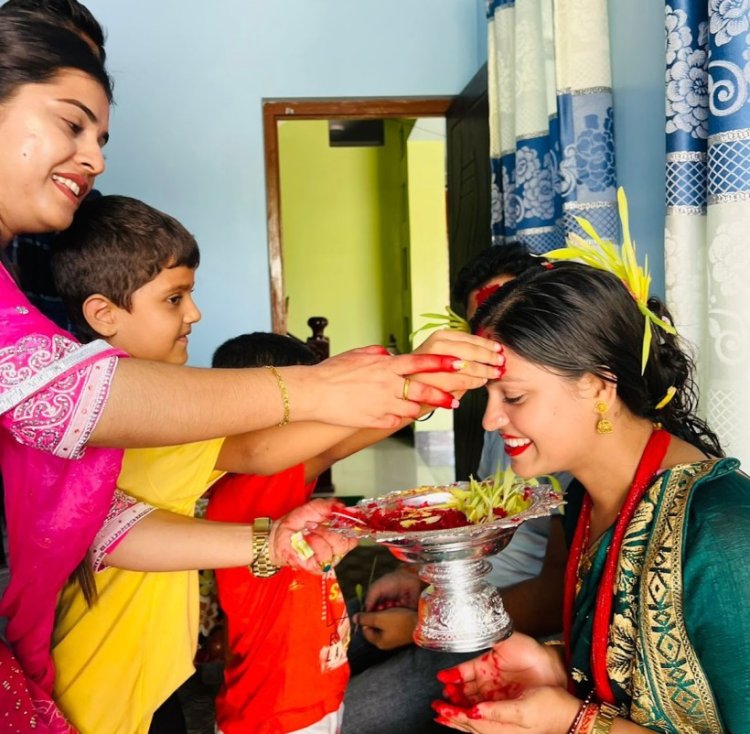
The 10 Days of Dashain:
1. ghatasthapana (day 1):.
Dashain starts with Ghatasthapana, a day filled with excitement and preparation. Households come to life as they set up a sacred altar called "Dashain Ghar." At the center is a special pot called "Kalash," filled with holy water and covered with cow dung to symbolize abundance and prosperity. This day is also for planting seeds like barley, wheat, or corn, symbolizing the vitality of life. Astrologers choose an auspicious time for Ghatasthapana when the blessings of Goddess Durga will be invoked.
2. (2-6) Days of Worship:
The days following Ghatasthapana are all about worship. Homes are filled with prayers and rituals, and families pay daily homage to Goddess Durga in her various forms, each representing different aspects of power, love, and protection. The soil on the altar nurtures the growth of the sacred "Jamara," and the sprouting greenery symbolizes vitality and prosperity.
7. Fulpati:
The seventh day marks a shift in the festival's tone, focusing on abundance and prosperity. In a colorful procession, the legacy of the royal family is remembered. It involves offerings like vibrant flowers, fruits, fragrant leaves, sugarcane, and other symbols of abundance, paraded through the streets. This ritual has a historical connection, recreating the journey from the ancestral royal palace in Gorkha to the Hanuman Dhoka palace in Kathmandu.
8. Maha Asthami:
This day delves into the more intense and fierce aspects of the divine. The festival shifts its focus to Goddess Kali, a formidable form of Durga. The rituals are elaborate, and offerings and sacrifices aim to invoke the blessings and protection of the goddess, creating a profound sense of reverence and devotion.
9. Maha Navami:
This day extends reverence to Goddess Durga and her various forms. It involves the culmination of pujas and the offerings that have been fervently prepared. A notable part of Maha Navami is the veneration of the vehicles of various gods and goddesses, symbolizing their modes of travel across the heavens.
10. Vijaya Dashami:
Vijaya Dashami is the grand culmination of the Dashain festival, and it's a day filled with profound symbolism. This is the day when good triumphs over evil, echoing the age-old stories of Goddess Durga's victory and Lord Ram's vanquishing of Ravana. It is a day when Nepalese families come together in a heartwarming display of unity.
One of the most touching aspects of Vijaya Dashami is the tradition of younger family members seeking blessings from their elders. Elders offer Tika, a special mixture of red vermilion, yogurt, and rice, and place it on the foreheads of their younger relatives. This act symbolizes the transfer of blessings, wisdom, and good wishes from one generation to the next. It's a beautiful expression of respect and love within the family, where the elders pass on their experiences and hopes for a prosperous future to the younger generation.
This auspicious day also signifies new beginnings. It's a time when people launch into new ventures, whether they are personal or professional. The blessings and the positive energy of Vijaya Dashami infuse a sense of confidence and optimism, making it a propitious time for success and setting out on fresh journeys.
The Final Days:
In the days following Vijaya Dashami, the focus shifts from the grand celebrations to more intimate familial bonds. This period emphasizes the importance of family connections, love, and togetherness.
Relatives visit each other's homes, not just to exchange pleasantries, but to strengthen the bonds of kinship. These gatherings are an essential part of Dashain, embodying the cherished values of Nepalese culture. Families share meals, engage in heartfelt conversations, and embrace blessings. It's a time when people catch up, reminisce about old stories, and create new memories. This period of coming together fosters a sense of belonging and unity that Dashain holds dear.
These final days of Dashain offer a beautiful contrast to the grand rituals of the earlier stages. They are a reminder that, at its core, Dashain is about celebrating family, love, and the enduring connections that make Nepalese culture so rich and vibrant. It's a time when people truly appreciate the bonds that tie them to their loved ones, reinforcing the values and traditions that have been cherished for generations.
Conclusion:
Dashain, with its remarkable history and vibrant 15-day celebration, stands as an embodiment of the rich cultural heritage of Nepal. The festival is a testament to the strength of tradition, the significance of spirituality, and the celebration of unity among diverse communities. Dashain encapsulates the essence of Nepal, its timeless stories, and its vibrant present, where ancient traditions and modern life coexist harmoniously. Exploring the history and rituals of this magnificent festival is an opportunity to understand Nepalese culture and the enduring spirit that has passed through generations.
- Dashain Festival
- Nepal Culture
- Hindu Traditions
- Festival Celebrations
- Religious Significance
- Cultural Unity
- Regional Variations
- Historical Evolution
- Family Reunions
- Cultural Preservation
- Nepalese Diaspora
- Red Vermilion Tika
- Harvest Season
- Environmental Impact
- Gender Roles
- Art and Craftwork
- Music and Dance
- Modern Dashain
- Community Bonding
- Tourism in Nepal
Previous Article
Morang District: Where History Meets Culture in Nepal's Eastern Heart
Next Article
Navigating the Virtual Classroom: The Rise of Virtual Reality in Education
What's your reaction.

Related Posts
The Vibrant Newari Tradition: Festivals, Cuisine, Architecture,...
Alisha Dahal Jul 5, 2023 0
Christmas Celebration in Nepal - A Guide to the Culture,...
Binod Shrestha Dec 24, 2022 0
Mother's day in Nepal
Alisha Dahal Apr 20, 2023 0
Festivals in Nepal - A Guide to the Culture, Traditions,...
Alisha Dahal Oct 3, 2022 0
History of the Newari Community
Bhushan Lamsal Oct 2, 2022 0
Kamal Pokhari: A Symbol of Cultural Significance in Kathmandu
kali May 15, 2023 0
Popular Posts
Top 5 richest person in Nepal
Alisha Dahal May 30, 2023 0
Private Companies in Nepal - A Guide to the Business and...
Alisha Dahal Dec 17, 2022 1
Brain Drain in Nepal: Causes, Consequences, and Solutions
Alisha Dahal Jun 23, 2023 0
Industrial Development in Nepal: Importance, Sectors, Challenges,...
Anisha Khanal Feb 10, 2023 0
Top 5 Electric Vehicles in Nepal: Explore the Best EV Models...
Rima jha Jun 3, 2023 1
Recommended Posts
Navigating the Virtual Classroom: The Rise of Virtual Reality...
Binod Shrestha May 8, 2024 0
Digitalize your business in Ecommerce Platform: A Marvelous...
sanjivan dhakal Apr 26, 2024 0
Booming Vehicle Rental Industry in Nepal
BijayaMagar Apr 23, 2024 1
Top Selling Laptop Brands In Nepal 2024
Sujan Rai Apr 23, 2024 0
Nepali Rudraksha: A Symbol of Divine Connection and Protection
Anurag Bhusal Apr 7, 2024 0
Random Posts
Discover the sacred significance of Nepali Rudraksha beads, symbols of divine connection...
Iphone 15 and Iphone 15 Pro in Nepal: Features and Prices
Vivaan Bhatt Sep 13, 2023 0
Discover the latest iPhone 15 and iPhone 15 Pro in Nepal. Explore their features,...
Apple Vision Pro: Revolutionizing VR/AR in Nepal | Price...
Bijay Bastola Jun 7, 2023 0
Experience the revolutionary Apple Vision Pro in Nepal, transforming VR/AR with...
20 Important Learnings from "How to Speak Money" by John...
Rajesh Khanal Mar 3, 2023 0
Learn 20 key takeaways from "How to Speak Money" by John Lanchester, a guide to...
Navigating the Landscape of Agro E-Commerce in Nepal: Benefits...
Swostika Shrestha Feb 1, 2023 0
Discover how Agro E-Commerce is revolutionizing the agriculture industry by offering...
Popular Tags
- personal finance
- Trekking in Nepal
- digital marketing
- cultural heritage
Voting Poll
- Places To Visit
- Art & Culture
- Things To Do
- Featured Story
- International
- List of Airports in Nepal 2023
- List of 3, 4 and 5 Stars Hotels in Nepal

Dashain Festival: A Comprehensive Guide to Nepal’s Biggest and Most Important Hindu Festival
Day 1: Ghatasthapana
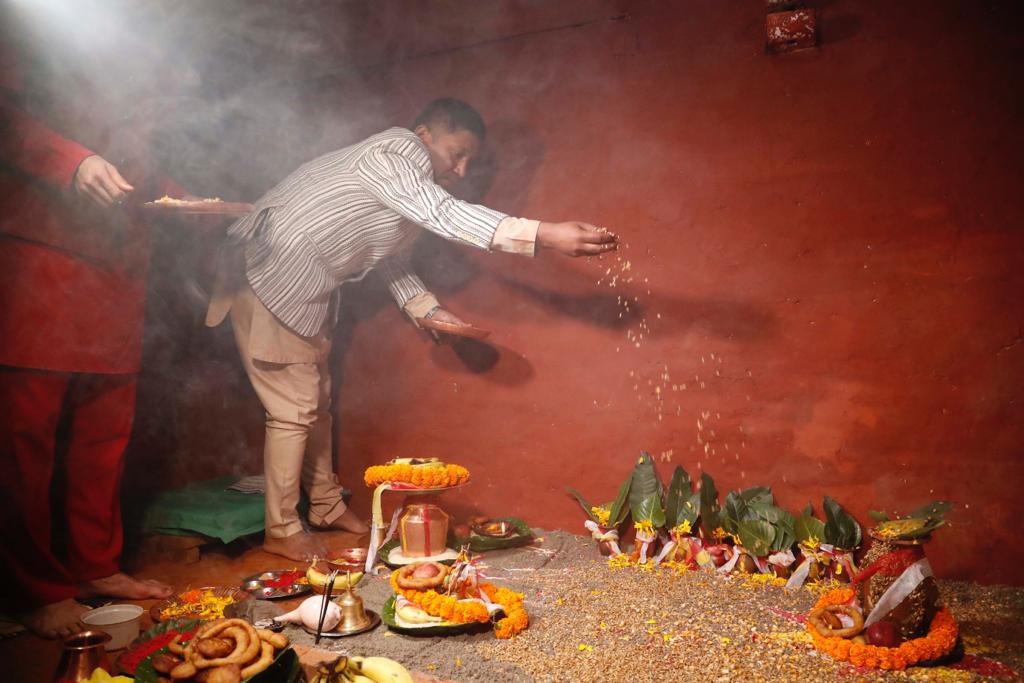
Ghatasthapana, the inaugural ceremony of Dashain, signifies the commencement of this festive season. In literal terms, it involves placing a kalasha or pot, symbolizing the goddess Durga. This significant event occurs on the festival’s first day.
During Ghaṭasthāpanā, a Kalash is filled with sacred water and then sown with barley seeds. Subsequently, the Kalash is positioned at the center of a rectangular sand block. The remaining sand bed is also adorned with grains. A priest initiates the puja by invoking the blessings of Goddess Durga upon the vessel. The timing of this ritual is carefully determined by astrologers.
Throughout Navaratri, it is believed that the goddess resides within this vessel. The space where these sacred activities unfold is referred to as the Dashain Ghar, traditionally off-limits to outsiders. A family member performs daily worship of the Kalash, both in the morning and evening. To facilitate the growth of the barley seeds, the Kalash is shielded from direct sunlight and holy water is offered daily. By the tenth day of the festival, the seeds sprout into five or six inches of vibrant yellow grass known as Kamara. These rituals persist until the seventh day of Dashain.
Day 7: Phulpati
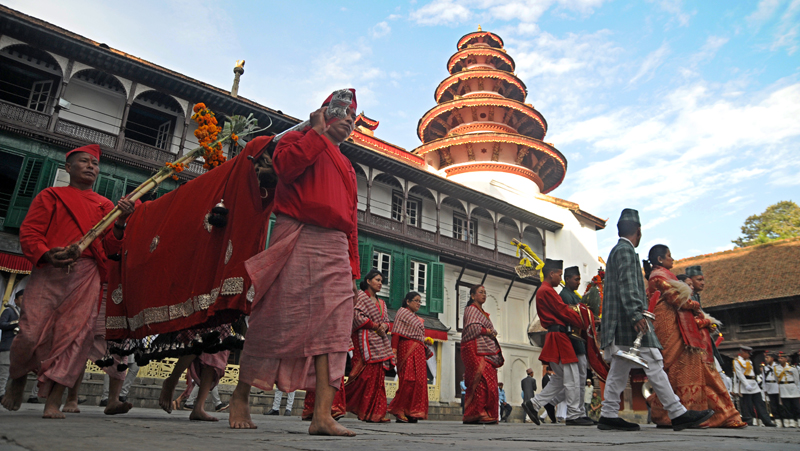
Phulpati, a significant celebration on the seventh day of Dashain, derives its name from the Nepali words “phūl” meaning flower, and “pātī” meaning leaf.
In historical times, during the Shah dynasty’s rule, a sacred procession consisting of flowers and jamara was transported from the Gorkha palace to Kathmandu Durbar Square on this auspicious day.
Traditionally, Phulpati involves the journey of the royal Kalash, banana stalks, jamara, and sugar cane, all adorned with red cloth, from Gorkha to Kathmandu. This remarkable procession covers a distance of approximately 169 kilometers, taking three days to complete. The event draws hundreds of government officials, elegantly attired, to the Tundikhel grounds, where they witness the spectacle.
In the past, the king used to observe the ceremony in Tundikhel while the Phulpati parade made its way to the Hanuman Dhoka royal palace. The festivities culminated with a grand display by the Nepalese Army, accompanied by celebratory gunfire that lasted for ten to fifteen minutes, honoring Phulpati. Subsequently, the Phulpati would be transported to the Hanuman Dhoka Royal Palace, where a parade would take place.
However, since the overthrow of the royal family in 2008, this two-century-old tradition has evolved. Now, the holy Phulpati offering is directed to the residence of the president, who has assumed the social and religious roles that were once held by the king.
In various cities and towns across Nepal and regions of India with a substantial Nepali population, Phulpati processions are a common sight. These processions involve adorning flowers, fruits, and sacred symbols, all enclosed in red cloth and covered with an auspicious red shawl. They are then carried on decorated wooden logs through the town, with townspeople offering flowers and fruits as the procession passes by their homes. Traditional Naumati instruments often accompany this vibrant display of cultural devotion and celebration.
Day 8: Maha Asthami
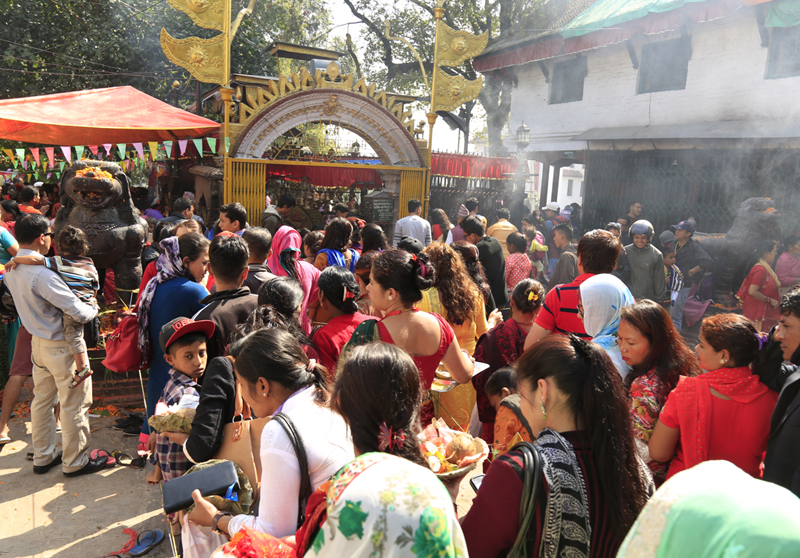
The eighth day of Dashain is known as Maha Asthami. On this day, the most formidable manifestation of Goddess Durga, the fierce Kali, is appeased through the sacrificial offering of buffaloes, goats, hens, and ducks at temples across the nation. This act symbolizes fertility and is a tribute to the goddess.
Appropriately, this night is called Kal Ratri (Black Night) in honor of the form of Durga worshipped on this occasion. Additionally, it is customary to sacrifice buffaloes in the courtyards of all land revenue offices throughout the country on this day.
At midnight, marking the commencement of Dashain, a total of 54 buffaloes and 54 goats are sacrificed as part of the rituals. Following the offering of blood, the meat is taken home and cooked as “prasad,” signifying food blessed by divinity. This sacred food is then presented on small leaf plates to household deities and shared among family members, considered an auspicious act.
Simultaneously, while the puja (worship) takes place, households of common people host grand feasts. Among the Newar people, a special event called “Khadga Puja” is observed, during which they perform a puja for their weapons. It’s a time for receiving blessings and applying tika (a sacred mark) from elders as well.
Day 9: Maha Navami
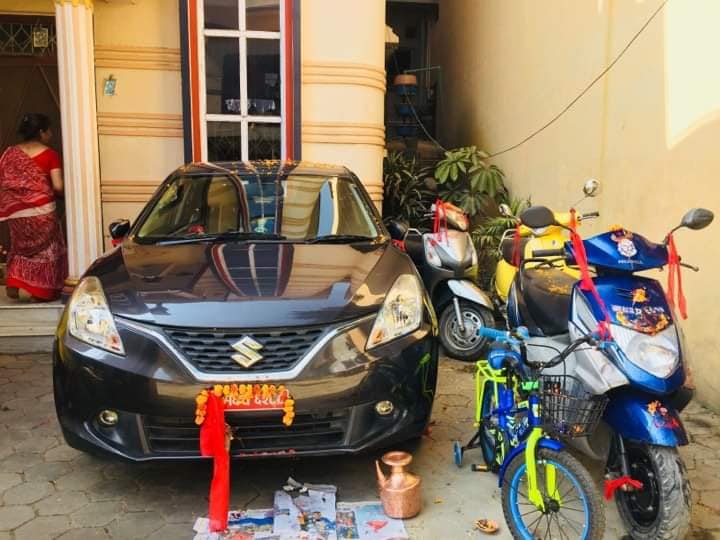
Maha Navami, the ninth day of Dashain, is referred to as “the great ninth day” and marks the culmination of Navaratri. This day witnesses the zenith of ceremonies and rituals. In a significant official event, the Nepal Armed Forces conduct ritual sacrifices within the Kot courtyard of one of the Hanuman Dhoka royal palaces. During this ceremony, the state offers sacrifices of buffaloes, accompanied by a feu de joie and a 21-gun salute fired in the presence of the Army Staff. It is worth noting that Maha Navami is sometimes known as “demon-hunting day” because it is believed that members of the defeated demon army attempt to evade capture by taking refuge in the bodies of animals and fowls.
On Maha Navami, devotees pay homage to Durga, the mother goddess Devi, as it is believed that all things instrumental in our livelihood should be appeased. Artisans, craftsmen, traders, and mechanics engage in worship and offer animal and fowl blood to their tools, equipment, and vehicles. Additionally, there is a tradition of worshiping vehicles on this day, as it is believed to safeguard against accidents throughout the year. From bicycles and cars to trucks, all types of vehicles are venerated on Maha Navami.
A particularly noteworthy aspect of this day is the opening of the Taleju Temple gates to the general public. Devotees throng to the temple throughout the day to pay their respects to the goddess, making it a spiritually charged and bustling occasion.
Day 10: Bijaya Dashami
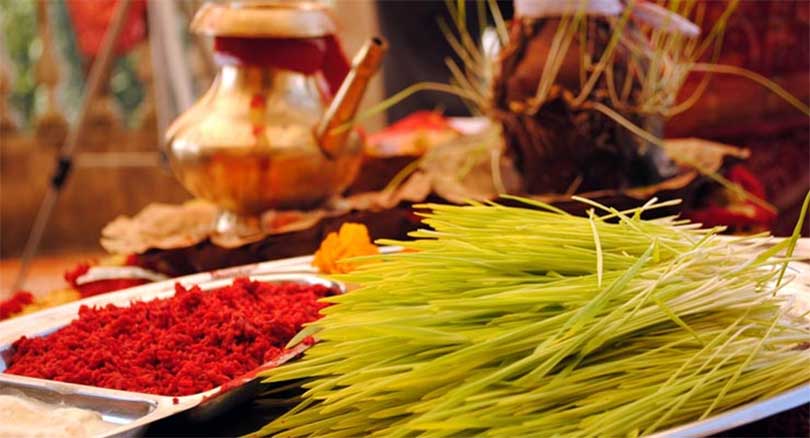
Bijayadashami, the tenth day of Dashain, holds special significance. It involves the preparation of a mixture known as “tika,” made from rice, yogurt, and vermilion. The timing of Dashain tika varies each year. On this day, elders apply this tika, along with Tamarara that was initially sown during Ghatasthapana, onto the foreheads of younger relatives, bestowing blessings for their future prosperity. The red color symbolizes the bonds that tie families and communities together.
During this period, elders also offer “Dakshina,” a small monetary gift, along with their blessings when younger relatives visit. This tradition continues for five days, concluding with the full moon. Throughout this time, families and relatives exchange gifts and warm greetings. The practice of receiving tika from all elder relatives, even those more distantly related, plays a vital role in strengthening community bonds. This tradition reflects the enthusiasm and vigor with which Dashain is celebrated, emphasizing its role in fostering unity and connections within the community.
Day 11: Papakunsha Ekadash
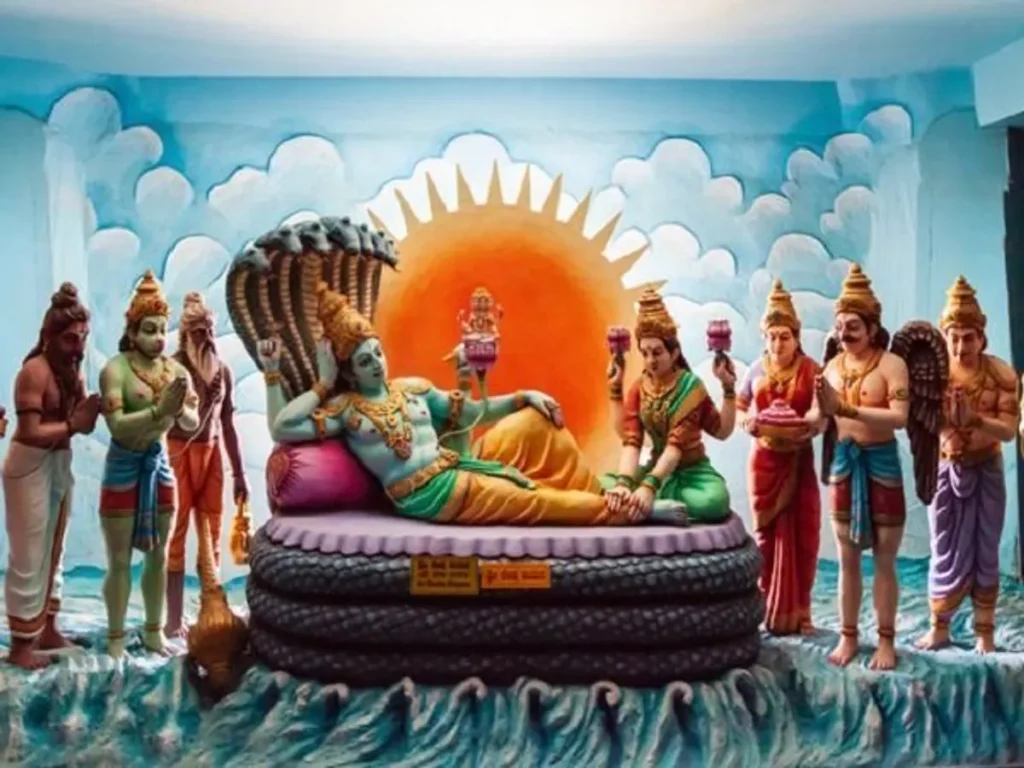
Ekadashi is the eleventh day in the Hindu lunar calendar, considered highly auspicious. People traditionally observe fasting on this day. Papakunsha Ekadashi, which falls on the day following Bijaya Dashami, is notable.
On Papakunsha Ekadashi, it is customary to wake up early, cleanse oneself, and wear fresh clothing before embarking on a day of fasting, which lasts until the evening. People often gather to hear Papakunsha Ekadashi stories and visit religious sites as part of their observance.
In some regions of Nepal, receiving tika (a sacred mark) is reserved for Bijaya Dashami, while in other areas, people start visiting their extended family and relatives on Papakunsha Ekadashi, continuing these visits until Kojagrat Purnima. While Ekadashi typically involves consuming only a Sattvic diet, some individuals continue their Dashain feasts on this day, earning it the nickname “Gidde Ekadashi” or “Vulture-like Ekadashi.”
Additionally, it is believed that donating items like gold, sesame, barley, grains, soil, umbrellas, and shoes on this day can lead to the attainment of heaven after one’s passing.
Day 15: Kojagrat Purnima
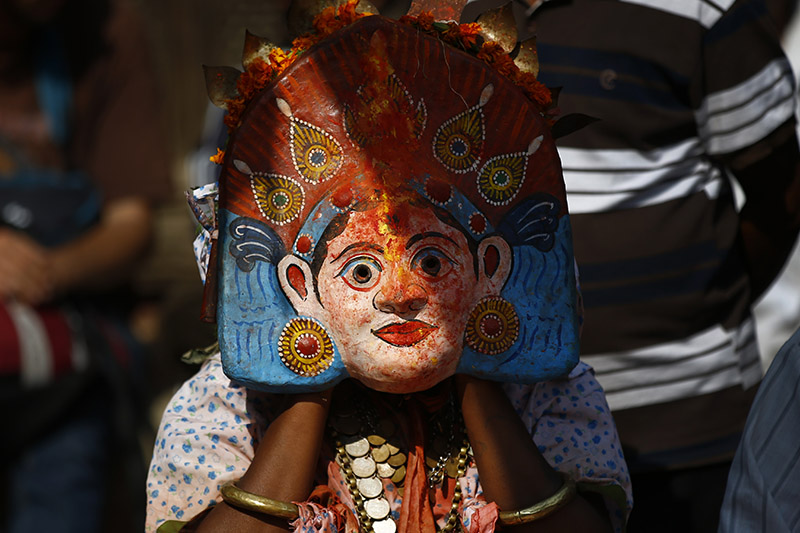
The festival’s concluding day, occurring on the full moon is known as Kojagrat Purnima or Sharad Purnima. The term “Kojagrat” translates to ‘who is awake.’ On this day, Goddess Laxmi, believed to be the deity of wealth, is venerated. It is thought that Goddess Laxmi descends to Earth and bestows wealth and prosperity upon those who stay awake throughout the night.
To celebrate this occasion, people engage in various activities such as playing cards and more, enjoying the festive night.
During this time, animal sacrifices were often practiced, harking back to the legendary battles between “divine” and “demonic” forces. Supporters of animal sacrifice view it as symbolically representing the sacrifice of our animalistic traits. However, opponents argue that such sacrificial acts primarily serve as a pretext for satisfying the appetite for meat and food, rather than having deeper symbolic significance.
Games, Carnivals, and More
As Dashain draws near, the tradition of kite flying gains popularity. It holds great significance in the celebration, as it is believed to be a way of communicating with the gods, urging them to halt the rains. People of all ages take to their rooftops to fly kites during the festival. The skies are adorned with colorful kites, and the air is filled with shouts of “changā chet” when someone successfully cuts another person’s kite string.
Playing cards is another cherished Dashain activity. While children are busy flying kites, older family members gather to engage in card games, combining both monetary stakes and enjoyment.
Bamboo swings, known as ‘ping’ in Nepali, are an integral part of the celebration. These swings capture the essence of local culture, tradition, community spirit, and fun. Constructed by community members using traditional methods that involve tough grass ropes, bamboo sticks, and wood, these swings are typically erected a week before Ghatasthapana and remain in place until after the Tihar festival following Dashain. Some swings reach heights exceeding twenty feet, and people of all ages revel in the joy of swinging. These swings hold special appeal, especially for children.
The festival also sees the organization of fairs and celebrations. In villages, small fairs featuring Ferris wheels for children and various adult entertainment are common. In urban areas, commercial fairs and festivities are typically organized to mark the occasion.
ALSO READ: Top 6 Luxurious Places to Stay in Pokhara, Nepal
- Celebration
- DashainFestival
- explore to live
- HinduFestival
- NepalFestival
- what the nepal
Celebrating Motherhood: A Look at Nepal’s Mata Tirtha Aunsi
Celebrating international press freedom day: a look at nepal’s media landscape, exploring nepal’s cultural music: a harmonious tourist magnet, leave a reply cancel reply.
Save my name, email, and website in this browser for the next time I comment.
Most Popular
Nepal inaugurates hyundai motor assembling plant in nawalparasi, mca-nepal’s new butwal substation project underway, hiking tribeni badimalika: spiritual & scenic trails in nepal, nepal gears up for vape ban: health concerns spark government action, recent comments, travel news, things to do when you are in nepal, explore the beauty of laprak: landscape, culture and wildlife, experience thai buddhism in nepal: the royal thai monastery , unforgettable experience: witnessing chaite chhath in nepal’s vibrant mithila region 2024, popular posts.
Welcome to What the Nepal! We are your gateway to the enchanting world of Nepal. Explore its majestic mountains, ancient temples, and vibrant culture through our curated content. Join our community of Nepal enthusiasts and let the magic of Nepal inspire your wanderlust. Discover, learn, and immerse yourself in the wonders of Nepal with us.
Contact Us: [email protected] Call: 9702044675 / 9823364817 अध्यक्ष तथा प्रबन्ध निर्देशक: Binod Acharya सम्पादकः Ranjana Khadka Information Dept Regd No: 4327-2080/81
© 2023 Copyright Cherie Media Pvt. Ltd | All rights reserved.
- Privacy Policy
- Submit Your Story
- Advertise with Us

Dashain | Essay | Nepal’s Biggest festival
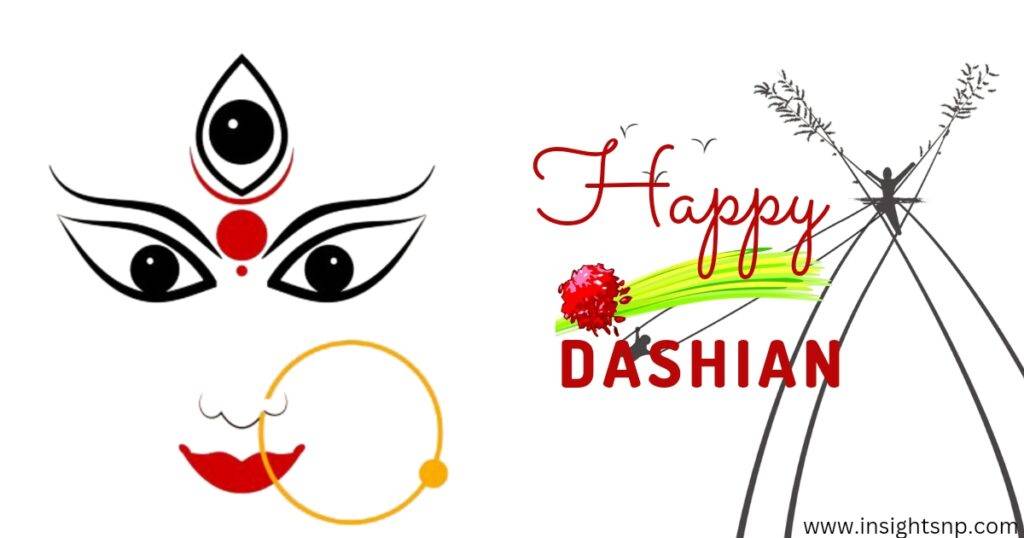
About Dashain
Dashain , also known as “Bada Dashain” or “Bijaya Dashami”, is a major Hindu religious festival in Nepal. It is celebrated by Nepali Hindus around the world. The festival is also known as Nauratha, which is derived from the Sanskrit term Navaratri which signifies Nine Nights. Hindus in India also commemorate a version of this festival, called Navaratri, Dussehra, or Dashera, with distinct customs and traditions.
When is Dashain celebrated?
Dashain is usually celebrated in Nepal during the month of Ashwin, which usually falls between September and October according to the Gregorian calendar. The festival begins on the bright lunar night (shukla paksha) of the month of Ashwin and ends on Purnima, the full moon, after 15 days of celebration. During the celebration, all government offices, educational institutions, and other offices remain closed. The exact dates of Dashain vary each year based on the lunar calendar.
Dashain 2023 date:
Important Days
Although, the festival spans 15 days, the most important days are the first, seventh, eighth, ninth, tenth, and fifteenth. All the important days are explained below:
Day 1: Ghatasthapana
The first day of the Dashain festival is known as Ghatasthapana. It is considered one of the most important days of the festival. The day of Ghatasthapana is the day when the Kalash or pot is filled with holy water and then sown with maize or barley seeds. This day is also the day when the Dashain Ghar is set up.
The Dashain Ghar is a room where the Kalash is placed. The goddess Durga is believed to reside in the Kalash during the Navaratri. The Kalash is kept away from direct sunlight, and holy water is offered to it every day. The Kalash is worshipped twice every day, once in the morning and then in the evening. These rituals continue until the seventh day of the festival. During this time, the barley or maize seeds grow to become five or six inches long yellow grass known as Jamara.
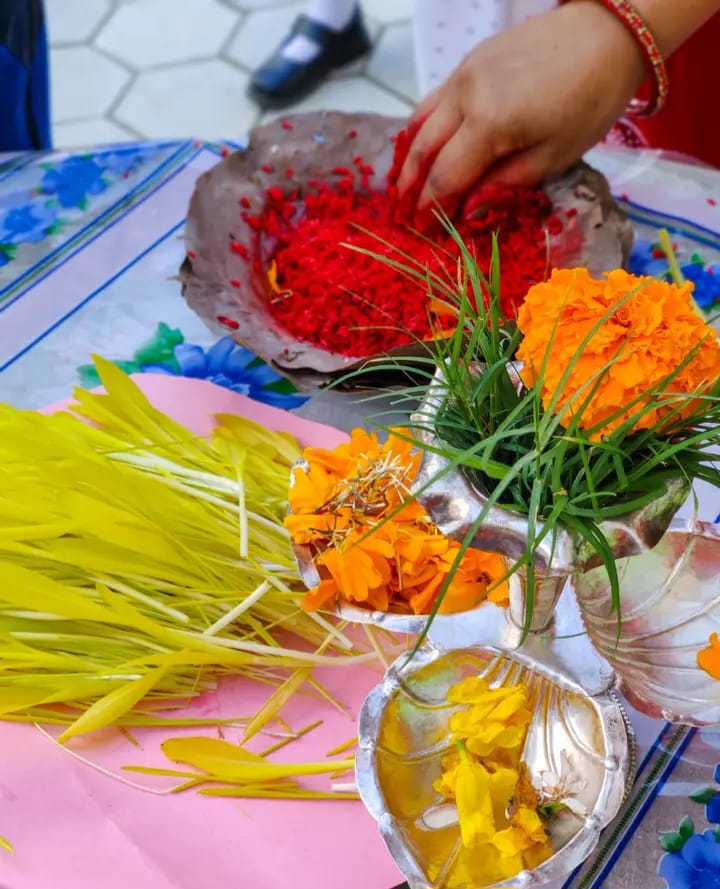
Jamara is considered sacred and received on the tenth day of the festival. The grass is grown in a dark room for nine days, and on the tenth day, it is offered to the goddess Durga.
Day 7: Phulpati
The seventh day of Dashain, Phulpati, is a significant celebration in Nepal. The word “Phulpati” is derived from two words, “Phul” meaning flower, and “Pati” meaning leaf. Traditionally, the royal Kalash, banana stalks, jamara, and sugar cane tied with red cloth are brought by Magars from Gorkha, which is about a three-day walk from Kathmandu. The Phulpati parade is headed towards the Hanuman Dhoka royal palace, where the king used to observe the ceremony in Tundikhel. The Nepalese Army presents a majestic display along with a celebratory firing of weapons that continues for ten to fifteen minutes in honor of Phulpati. The Phulpati is then taken to the Hanuman Dhoka Royal Palace, where a parade is held.
After the overthrow of the royal family in 2008, the tradition was changed, and the holy offering of Phulpati is now taken to the residence of the President. The President has taken over the King’s social and religious roles after the end of the monarchy. The procession of Phulpati is also observed in various other cities and towns across Nepal and in India, where there is a significant Nepali population.
The day of Phulpati is celebrated with traditional Naumati instruments , which add to the festive atmosphere. The Nepalese people participate in the procession with great enthusiasm, and the day is marked with joy and happiness.
Day 8: Maha Asthami
The eighth day of Dashain is known as Maha Asthami. On this day, the fierce form of Goddess Durga, Kali, is worshipped and appeased through the sacrifice of animals like buffaloes, goats, hens, and ducks in temples across the Country. This day is also referred to as Kal Ratri or Black Night after the form of Durga worshipped on this day.
Along with the puja, great feasts are held in the homes of common people on this day. The Newar people, a prominent ethnic group in Nepal, celebrate this day by performing Khadga Puja, where they worship their weapons and seek blessings from their elders.
Day 9: Maha Navami
The ninth day of Dashain, referred to as Maha Navami, is considered the pinnacle of the Navaratri celebrations. It is known as “the great ninth day” and marks the end of Navaratri. Various ceremonies and rituals are performed on this day. One of the most significant events that take place on Maha Navami is the official ritual sacrifices of the Nepal Armed Forces at one of the Hanuman Dhoka royal palaces, the Kot courtyard. Buffaloes are offered as sacrifices, and a 21-gun salute is fired in the presence of the Army Staff. This day is also known as the demon-hunting day as it is believed that defeated demons try to save themselves by hiding in the bodies of animals and fowls.
The Taleju Temple gates are opened to the general public only on Maha Navami. Thousands of devotees flock to pay their respects to the goddess. The temple is filled with devotees all day long, seeking blessings from the goddess. Artisans, craftsmen, traders, and mechanics offer animal and fowl blood to their tools, equipment, and vehicles, in the hope of warding off accidents throughout the year. Therefore, all vehicles from bikes to cars and trucks are worshipped on this day.

Day 10: Bijaya Dashami
On the tenth day of the Dashain festival, known as Bijaya Dashami, a special mixture called “tika” is prepared using rice, yogurt, and vermilion. The tika along with Jamara symbolizes the blessings of abundance for the upcoming year and is applied by elders to the foreheads of their younger relatives. This ritual is an important part of the festival and helps to strengthen family and community ties.
In addition to the tika, elders also give a small amount of money, called “Dakshina”, to their younger relatives as a symbol of their blessings. This tradition continues for five days until the full moon, during which families and relatives exchange gifts and greetings. By taking tika from all of their elder relatives, even distant ones, people renew their community ties and strengthen their bonds with one another.
Day 15: Kojagrat Purnima
Kojagrat Purnima is the final day of the Dashain festival and falls on the full moon day. It is also known as Sharad Purnima, and the term Kojagrat translates to ‘who is awake.’ On this day, people worship Goddess Laxmi, the goddess of wealth, as it is believed that she blesses those who remain awake all night with prosperity and good fortune. It is a common belief that Goddess Laxmi descends to the earth on this day.
People often celebrate this day by staying up all night and participating in various activities such as playing cards and other games.
Music: The Soulful Echo of Malshree Dhoon
Malshree Dhoon: Dashain has its very own harmonious heartbeat – the Malshree Dhoon. This melodious tune serves as a herald for Dashain’s arrival, resonating deeply with the festival’s essence. Originating in the 17th century as a part of the Newa art form, this devotional melody has transcended boundaries to become an integral part of Nepal’s national culture. It now serenades the nation during Dashain, uniting hearts in celebration.
Mantras: Blessings in Sacred Sanskrit
Dashain isn’t just a time for jubilant gatherings; it’s a moment for sacred blessings. As elders apply the auspicious tika (a blend of yogurt, rice, and vermilion) on the foreheads of younger family members, they recite ancient Sanskrit mantras, invoking blessings of good fortune, resilience, and prosperity.
Mantra for Men and Boys
In Devanagari:
आयु द्रोणसुते श्रेयं दशरथे शत्रुक्षेयं राघवे। ऐश्वर्यं नहुषे गतिश्च पवने मानं च दुर्योधने।। दानं सूर्यसुते बलं हलधरे सत्यं च कुन्ती सुते। विज्ञानं विदुरे भवन्तु भवतां कीर्तिश्च नारायणे।।
Mantra for Women and Girls
जयन्ति मङ्गला काली भद्रकाली कपालिनी । दुर्गा क्षमा शिवा धात्री स्वाहा स्वधा नमोकस्तुते ।।
These mantras aren’t just words; they are whispers of blessings that carry the weight of tradition, culture, and spirituality.
Games: Unveiling the Playful Side of Dashain
Kite Flying: As Dashain approaches, the skies of Nepal transform into a canvas of colorful kites. Kite flying isn’t just a pastime; it’s a tradition rooted in the belief that it reminds the heavens not to send rain. People of all ages ascend to their rooftops, shouting ‘changā chet’ as they cut each other’s kite strings.
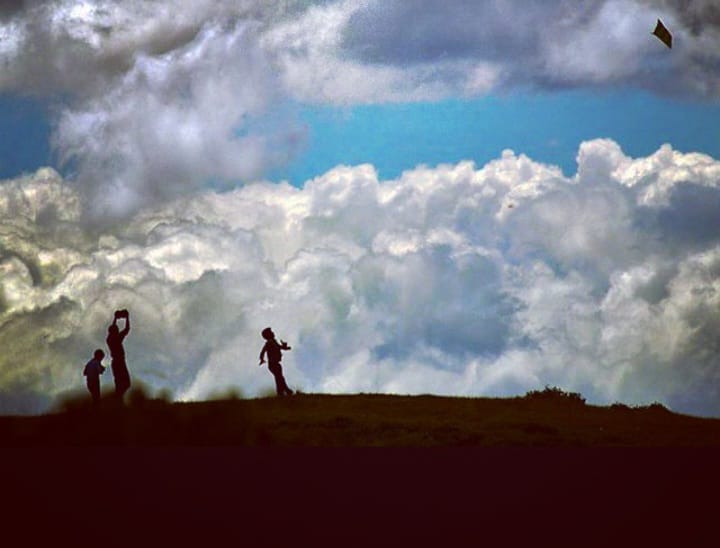
Playing Cards: While children soar with kites, the older generation engages in friendly card games, merging money and merriment. It’s a time for bonding and relishing the festival spirit.
Swings (Ping): Bamboo swings, lovingly known as ‘ping’ in Nepali, emerge across Nepal, embodying local culture and camaraderie. Constructed using traditional methods, these swings are crafted with tough grass ropes, bamboo sticks, and wood. They stand tall as a symbol of unity, joy, and community spirit.
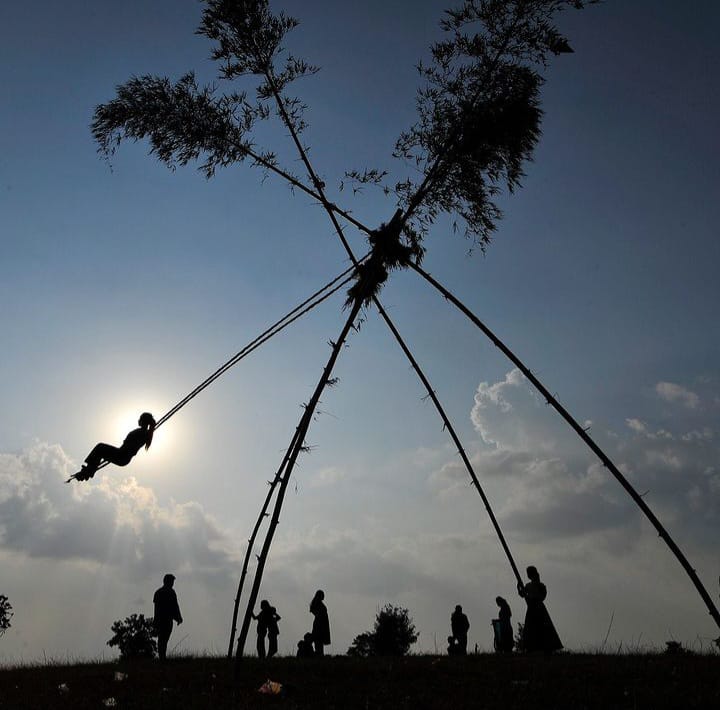
Fairs and Celebrations: Villages come alive with small fairs, featuring Ferris wheels for the young ones and a plethora of entertainment for adults. In the urban landscape, commercial fairs and celebrations paint the town with a festive palette, infusing life and vibrancy into the atmosphere.
The act of buying and wearing new clothes takes on profound significance during Dashain. For many in rural Nepal, it’s a rare opportunity to don fresh attire. Shops offer enticing festival discounts, making shopping an integral part of the celebration. Clothing sales reach their zenith during Dashain.
Dashain feasts are a testament to culinary opulence. Thousands of animals, including buffalo, ducks, and rams, are ritually sacrificed as offerings to appease the goddesses. This age-old ritual is deeply ingrained in Dashain traditions, believed to invoke divine blessings. The demand for meat escalates significantly during Dashain, owing to the plethora of feasts and gatherings.
While Dashain traditions brim with cultural significance, they have not been immune to controversy, especially concerning animal sacrifices. Advocates for animal welfare have called for alternatives, like using pumpkins and coconuts, to minimize harm to animals.
Conclusion: The Essence of Dashain
In conclusion, Dashain is much more than a religious festival. It’s a celebration of unity, family, and tradition. Dashain 2023, with its anticipation and festivity, is a testament to the resilience of Nepali culture and the enduring spirit of its people.
1. What is the significance of Dashain?
2. when does dashain 2023 begin, 3. what are the essential rituals of dashain, 4. how do people prepare for dashain, 5. how does dashain impact nepali society.
Tihar Festival: A Celebration of Lights and Joy
Related Posts
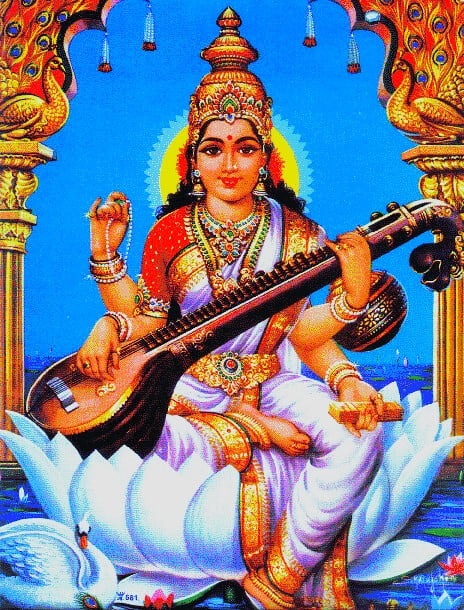
Saraswati Puja 2024 in Nepal: Festival for Goddess of Wisdom
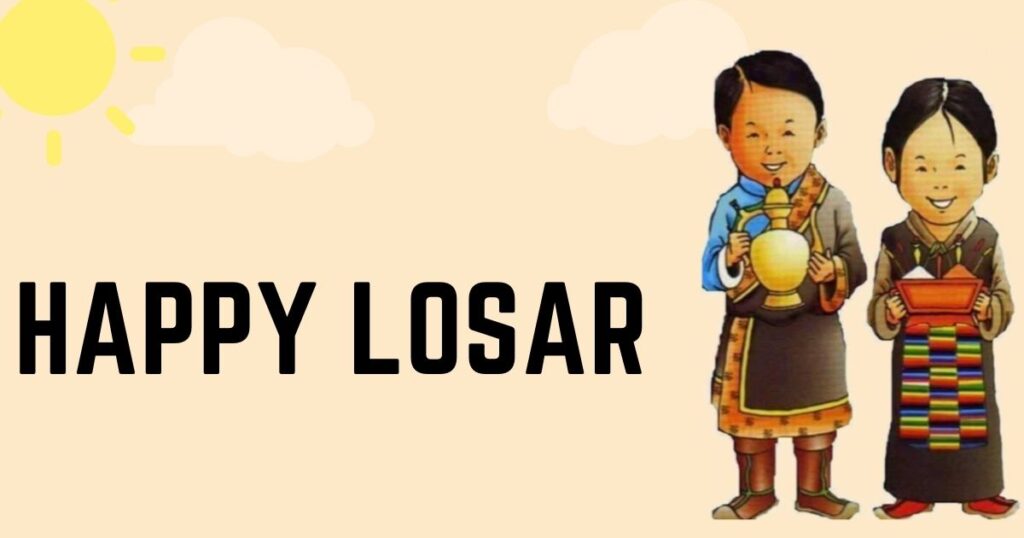
Losar: New Year Of Different Communities
Leave a comment cancel reply.
Your email address will not be published. Required fields are marked *
Save my name, email, and website in this browser for the next time I comment.
- Practice Test
Essay on Dashain in English [400+ Words] for Students
Akancha Chhetri
Content Writer | Updated: November 24, 2023 04:25 NST
Dashain is also called 'Bada Dashain' or ' Vijaya Dashami'. It is generally celebrated by the Hindus in the months of Ashwin or Kartik of Nepali year or October according to the lunar calendar.
Dashain is celebrated as the symbol of victory of virtue or truth over sin or falsity. According to Hindu Mythology, the Dashain festival has been celebrated since Lord Ram and Goddess Durga had gotten the victory over Ravan and demons respectively. Durga is worshipped as the goddess of strength.
Dashain festival is celebrated for fifteen days, but all days are not equally important. The first day is ' Ghatasthapana ' on which people sow the seeds of barley, maize, wheat to use the seeding of these seeds and puts them in the dark corners to grow yellow. The seedlings are called ' Jamara '. The seventh day is ' Phoolpati '. On this day 'Goddess Durga' is worshipped. People bring various fruits and flowers to Durga Temples. The eighth day and ninth day are called " Maha Asthami " and " Maha Nawami " respectively. On this day People offer the sacrifice of different animals such as he-goats, he-buffaloes, etc.
The tenth and the most important day of Dashain is " Vijaya Dashami ". All junior members receive 'Tika' on their foreheads from their elders and ' Jamara ' over their ears. On that day, elders bless them for their good health, prosperity, and long life. The last day to bid farewell Dashain is " Kojagrat Poornima ".
During this festival, all offices, schools remain closed for at least ten days in Nepal . Those who are away from their home return back to celebrate this festival with their family. Everybody looks happy and the weather is pleasant, neither too cold nor too hot. People enjoy different delicious food, new clothes, swings(ping), etc. Especially, children are happiest because they are provided with new clothes and crisp notes when they receive Tika. Everybody in the family gathers together and share their experience. The festival offers us a chance to strengthen brotherhood, mutual co-operation, and good relations.
Dashain festival helps us to enhance our joy, but some people regard it as a competition by borrowing money. We must swallow the bone, according to our throat. It is also not good to sacrifice innocent animals during the festival in the name of goddess Durga. We must understand that goddess will not be satisfied by killing those creatures, but if we kill our evil thoughts and behaviors. Only after that, Dashain can be blissful for everyone.
You may like: Essay on Nepal Essay on Tihar
- +2 Science Colleges
- +2 Management Colleges
- +2 Law Colleges
Be the first to know! Join our newsletter for exclusive updates and news delivered straight to your inbox.
Dashain Festival: Embracing Joy and Tradition
- Festivals in Nepal

But, What is Dashain festival exactly?
Dashain, also referred to as “ Vijaya Dashami ,” is more than just a series of festivities. It is a time when the Nepali community gathers to honor traditions, connect with loved ones, and pay homage to the goddess Durga. The festival showcases the essence of unity, devotion, and the beauty of Nepali culture.
And, in this exploration of the Dashain festival, we will delve a little into the heart of this remarkable celebration. We will unravel the historical roots that have shaped Dashain’s prominence, understand its role in fostering social bonds, and highlight its growing impact on tourism.
Join us in discovering the essence of Dashain – one of the 8 Festivals in Nepal To Add in Your Bucket List . This is where joy and tradition intertwine to create an experience that transcends borders and brings people together in celebration.

Page Contents
The Historical and Cultural Context of Dashain Festival
The origins of the Dashain festival can be traced back to ancient Hindu mythology , where it holds a special place in the hearts of Nepali people. The festival draws its inspiration from the tale of the goddess Durga’s victory over the demon named Mahishasura , symbolizing the triumph of good over evil.
According to legend, Mahishasura had wreaked havoc and terrorized the world with his tyranny. The gods, unable to defeat him, combined their divine powers to create Goddess Durga, a powerful deity bestowed with their collective energy.
Riding a lion and armed with various weapons, Durga engaged in a fierce battle with Mahishasura for nine days and nights, ultimately defeating and slaying the demon on the tenth day.
Thus, this victory of Durga over Mahishasura is the mark of celebrating the Dashain festival, which spans for ten days. And, each day holds its significance and rituals, reflecting the stages of the battle and the eventual triumph of righteousness.

Celebration Dates and Duration of Dashain Festival
- Ghatasthapana: The Inception of Dashain The festival commences with “ Ghatasthapana ,” the ritualistic installation of a sacred vessel filled with water and barley seeds. This vessel, known as “ Kalash ,” symbolizes the goddess Durga’s presence and her divine energy. The barley seeds, sown in the vessel, represent the goddess’s increasing power as they sprout over the next nine days.
- Phulpati: During the festival of Dashain, Fulpati marks the seventh day of the celebrations and is observed with great enthusiasm and reverence. The ritual involves the collection of various elements from different plants and trees, including banana stalks, sugarcane sticks, and jamara (barley shoots). These items are collected from various regions and brought to the homes of families and communities to be included in the worship and rituals.
- Maha Ashtami: Invoking the Goddess’s Blessings On the eighth day of Dashain, known as “ Maha Ashtami ,” devotees gather to worship the goddess Durga. Elaborate rituals and offerings are made, often involving the sacrifice of animals as an offering to the goddess. This ritual signifies the belief in the goddess’s power to protect and bless her devotees.
- Maha Navami: The Slaying of Demons “ Maha Navami ,” the ninth day of Dashain, is marked by the worship of the goddess Durga and the symbolic slaying of demons. Animal sacrifices are offered to the goddess as an expression of gratitude for her victory over evil forces. This day reaffirms the triumph of good over evil and the power of divine intervention.
- Vijaya Dashami: Blessings and Unity The tenth and final day of Dashain, “ Vijaya Dashami ,” holds immense significance. Families come together to exchange blessings, receive Tika (a mixture of yogurt, rice, and vermilion), and Jamara (barley sprouts). The elders bless the younger members of the family, and in return, seek their good wishes. This ritual fosters unity, respect, and strong familial bonds.
- Pandals and Temples: Sites of Devotion Throughout the festival, temporary structures called “ pandals ” are set up across cities and towns. These pandals house statues and images of goddess Durga, attracting devotees for prayers and offerings. Temples dedicated to the goddess also become centers of devotion and celebration, with devotees queuing up to seek blessings.
- Community and Social Gatherings Dashain transcends individual households and extends to the broader community. People from various walks of life come together to celebrate, share meals, and participate in cultural programs. The festival serves as a unifying force, bridging differences and promoting a sense of collective identity.
- Joyous Festive Cuisine Food plays a central role in the celebration of Dashain. Families prepare traditional dishes such as meat curries, rice, and various sweets to share with their loved ones. The festive meals are not only a feast for the taste buds but also represent the abundance and prosperity that the festival symbolizes.
- Shopping and New Attire Dashain is also a time of shopping and dressing in new clothes. People buy new attire and accessori es, symbolizing a fresh start and embracing the festive spirit. Markets bustle with activity as individuals purchase gifts and goods for their families and loved ones.

Festive Atmosphere and Activities
During Dashain, Nepal comes alive with vibrant decorations that adorn homes, streets, and public spaces. As, everything cannot be described in one paragraph, here are the breakdown of some activities that locals do during Dashain festive atmosphere:
- Shopping Extravaganza: Preparing for Celebrations
The weeks leading up to Dashain witness a flurry of shopping activities. People flock to markets and shops to purchase new clothes, accessories, and gifts for family and friends.
It is customary to wear new attire during the festival, signifying a fresh beginning. The markets buzz with energy as shoppers indulge in the joy of selecting traditional garments and festive essentials.
- Kite Flying: Soaring High with Joy
Kite flying is a beloved tradition during Dashain, particularly on Ghatasthapana and throughout the festival. Colorful kites fill the sky , creating a picturesque spectacle.
Families and friends gather on rooftops and open spaces to compete in friendly kite-flying contests. The sight of kites soaring against the backdrop of the Himalayan Mountains is a true embodiment of the festive spirit.
- Swings and Games: Nurturing Playfulness
Swings, locally known as “ping,” become a common sight in many communities during Dashain. These swings are often beautifully decorated with flowers and fabrics.
Children and adults alike indulge in the joy of swinging, heightening the festive mood. Additionally, various traditional games and activities are organized, including sack races, tug-of-war, and cultural performances.
- Music and Dance: Enlivening Celebrations
Music and dance are integral components of Dashain festivities. Cultural troupes and local artists showcase their talents through traditional performances.
Folk dances, melodious tunes, and rhythmic beats fill the air as people gather to watch and participate. These artistic expressions add a dynamic and captivating dimension to the festive ambiance.
- Delicious Feasts: Savoring Culinary Delights
Dashain is a time for indulgence in delectable culinary creations. Families prepare lavish feasts that include a variety of traditional dishes.
Goat meat dishes, known as “ khasi ko masu ,” are central to the menu, symbolizing the significance of animal sacrifice. Alongside meat dishes, an array of vegetarian options and sweets are also prepared, reflecting the diversity of Nepali cuisine.
- Cultural Performances: Celebrating Diversity
Community centers and open spaces become stages for cultural performances during Dashain. Folk dances, music concerts, and theatrical presentations showcase Nepal’s cultural diversity.
People from different backgrounds come together to celebrate the richness of their heritage through artistic expressions. These performances bridge generations and evoke a sense of national pride

Social Significance of Dashain Festival
- Strengthening Family Bonds: Togetherness and Unity
At its core, Dashain is a celebration of family ties and bonds. The festival provides an opportunity for family members to come together, regardless of their geographic locations.
People return to their ancestral homes to celebrate Dashain with their loved ones, reinforcing familial connections and creating cherished memories. The joy of reuniting with family members adds a deep sense of warmth and belonging to the festival.
- Promoting Cultural Identity: Embracing Nepali Traditions
Dashain serves as a powerful reminder of Nepal’s rich cultural heritage and traditions. As families engage in rituals and customs passed down through generations, the cultural identity of Nepal is strengthened.
The festival encourages the preservation of traditional values, rituals, and practices, fostering a sense of pride and belonging among Nepali communities.
- Economic Boost: Stimulating Local Economy
Dashain brings about a surge in economic activities across Nepal. The increased demand for clothes, gifts, decorations, and food items fuels local businesses and markets.
Artisans, traders, and vendors experience heightened sales during this period, contributing to the local economy’s growth. The festival’s economic impact is not limited to urban areas; it extends to rural communities as well.
- Religious Reverence: Renewing Faith and Spirituality
As a religious festival, Dashain holds immense significance for devout Hindus. The rituals and ceremonies conducted during Dashain serve as a way to renew one’s faith and spirituality.
The act of seeking blessings from goddess Durga and other deities is believed to bring protection, prosperity, and spiritual fulfillment. This religious aspect of the festival instills a sense of devotion and reverence among the participants.

Impact on Tourism in Dashain Festival
Beyond its local significance, Dashain also plays a pivotal role in shaping the nation’s tourism landscape. The festival’s unique blend of cultural heritage, religious fervor, and social harmony makes it an attractive proposition for travelers seeking an immersive experience. Let’s delve into the impact of Dashain festival on tourism.
- Cultural Tourism: Showcasing Nepal’s Heritage
Dashain provides tourists with a front-row seat to Nepal’s rich cultural heritage. Visitors have the opportunity to witness traditional rituals, vibrant processions, and intricate ceremonies that are an integral part of the festival. The colorful displays of devotion and cultural pride offer a window into the heart of Nepal’s identity, captivating cultural enthusiasts and history buffs from around the world.
- Religious Pilgrimage: Attracting Devotees
For devout Hindus, Dashain is a significant religious event, drawing pilgrims from neighboring countries and beyond. The fervent worship of goddess Durga and the participation in sacred rituals create an aura of spirituality that resonates with believers. Temples and shrines across Nepal become bustling centers of religious activity, inviting pilgrims to partake in the age-old traditions.
- Festive Ambiance: Immersive Experiences
The festive atmosphere during Dashain adds an element of excitement and wonder to Nepal’s tourist landscape. Visitors can immerse themselves in the local culture by joining in celebrations, witnessing the grand processions, and indulging in traditional feasts. The sights, sounds, and flavors of Dashain create memorable experiences that leave an indelible mark on travelers.
- Community Engagement: Authentic Interactions
Travelers often seek authentic interactions with local communities to gain a deeper understanding of a destination’s culture. Dashain offers a unique opportunity for cultural exchange as tourists are welcomed into Nepali households to partake in festivities. Sharing meals, exchanging stories, and participating in rituals allow tourists to forge meaningful connections with locals.
- Boosting Local Economy: Economic Impac t
The influx of tourists during Dashain stimulates the local economy across various sectors. The demand for accommodations, transportation, souvenirs, and traditional attire experiences a surge. Local businesses, artisans, and vendors benefit from the increased footfall, contributing to sustainable economic growth in both urban and rural areas.
- Cultural Education: Learning Through Festivals
Educational tourism is on the rise, with travelers seeking opportunities to learn about new cultures and traditions. Dashain serves as an authentic platform for cultural education, allowing tourists to gain insights into Nepal’s history, mythology, and way of life. Visitors can observe first-hand the intricate rituals and practices that have shaped Nepali society.
- Festival Tourism: Enhancing Nepal’s Appeal
As travelers become more inclined towards experiential tourism, festivals like Dashain gain prominence. The festival tourism trend involves planning trips around significant cultural events. Dashain’s colorful processions, lively dances, and profound rituals make it a draw for festival-focused tourists who want to witness and participate in these unique celebrations.
- Cultural Exchange: Bridging Cultures
Dashain’s impact on tourism extends beyond Nepal’s borders. The festival provides a platform for cultural exchange, as international tourists share their own traditions and customs while imbibing Nepali culture. This exchange of ideas fosters mutual respect and understanding among diverse cultures.

Modern Adaptations and Changes
As Nepal navigates the complexities of globalization and technological advancements, the festival has also undergone certain adaptations and changes. This chapter explores the modern shifts in Dashain’s celebration, shedding light on how contemporary elements intersect with age-old traditions.
- Technological Connectivity: Virtual Celebrations
In an era defined by connectivity, technology has found its way into Dashain festivities. Virtual platforms and social media provide a platform for distant families to connect and celebrate together, even if physically separated. Video calls, live streams of rituals, and online gatherings have become avenues to bridge the gap during Dashain.
- Diaspora Involvement: Global Dashain
Nepali diaspora communities around the world actively partake in Dashain celebrations, often infusing their host countries with the festival’s vibrancy. In countries like the United States, the United Kingdom, and Australia, Nepali communities organize public celebrations that invite locals to experience the essence of Dashain
- Environmental Consciousness: Sustainability Considerations
In response to global environmental concerns, Dashain has begun to adapt to more sustainable practices. The use of eco-friendly materials, reduced waste, and awareness campaigns have been incorporated into the celebration. This modern adaptation aligns Dashain with the growing global movement towards sustainability.
- Changing Social Dynamics: Gender Roles and Equality
As societal norms shift, Dashain also reflects changing gender roles and dynamics. Modern celebrations emphasize inclusivity and equality, addressing traditional gender stereotypes and highlighting the contribution of women in the festival’s rituals and activities.

In this journey through the chapters, we delved into the festival’s origins, its religious and cultural context, the diverse rituals and traditions that adorn its days, and the way it has evolved to accommodate the demands of modernity. From the exhilarating animal sacrifices to the serene tika ceremonies, Dashain paints a vivid picture of devotion, gratitude, and camaraderie.
As we conclude this journey, it is evident that Dashain is a celebration of life itself. It represents the cyclical nature of existence, the triumph of good over evil, and the unbreakable bond between families and communities. The festival’s ability to adapt to the demands of modern times while staying true to its core values is a testament to its enduring legacy.
As Nepal continues to evolve, Dashain remains a thread that binds generations, fostering a sense of belonging and unity. In its rituals, celebrations, and cultural expressions, Dashain exemplifies the resilience of tradition in the face of change
In the heart of Dashain, we find a celebration that captures the essence of Nepal’s soul—a celebration that welcomes everyone to embrace joy, togetherness, and the timeless beauty of tradition.
Post a comment Cancel reply
Your email address will not be published. Required fields are marked *
Save my name, email, and website in this browser for the next time I comment.
Home — Essay Samples — Arts & Culture — Carnival — Dashain: One of the Most Important Holidays in Nepal
Dashain: One of The Most Important Holidays in Nepal
- Categories: Carnival Festival
About this sample

Words: 398 |
Published: Aug 30, 2022
Words: 398 | Page: 1 | 2 min read

Cite this Essay
Let us write you an essay from scratch
- 450+ experts on 30 subjects ready to help
- Custom essay delivered in as few as 3 hours
Get high-quality help

Verified writer
- Expert in: Arts & Culture Life

+ 120 experts online
By clicking “Check Writers’ Offers”, you agree to our terms of service and privacy policy . We’ll occasionally send you promo and account related email
No need to pay just yet!
Related Essays
1 pages / 495 words
2 pages / 984 words
1 pages / 465 words
1.5 pages / 793 words
Remember! This is just a sample.
You can get your custom paper by one of our expert writers.
121 writers online
Still can’t find what you need?
Browse our vast selection of original essay samples, each expertly formatted and styled
Related Essays on Dashain and Tihar
Hinduism is the name given to one of the most ancient religion practices in India. Vedanta is the true name of this religion. When British rule began to populate India this ancient religion evolved into what is known today as [...]
I’m sure that (most of you) recognize this song. It is finally fall, and what does that mean? Halloween, which is my favorite time of the year. From the candy to the costumes and the ghost stories, Halloween is a day of being [...]
Henry Wadsworth Longfellow was a committed abolitionist who viewed slavery as an abomination and the Civil War as a just cause for the Union, as long as it resulted in an end to slavery and subsequent reconciliation between the [...]
Christina Rossetti’s poem ‘Remember’ is a 14-line sonnet that explores the ideas of loss, grief, and separation. As often observed in her poetry, strong visual imagery alluding to the concepts of life, death, beginning and end, [...]
The difficulty for most contemporary Native American authors is how to present their work to a populace who is not entirely familiar with the modern Indian situation and lifestyle. One way that Alexie Sherman and Velma Wallis [...]
Most of Rossetti’s poetry has links to the concerns of love and passion, with some displaying it as enjoyable if not exciting. However, on the other hand much of her writing condemns passion, making links to religious texts such [...]
Related Topics
By clicking “Send”, you agree to our Terms of service and Privacy statement . We will occasionally send you account related emails.
Where do you want us to send this sample?
By clicking “Continue”, you agree to our terms of service and privacy policy.
Be careful. This essay is not unique
This essay was donated by a student and is likely to have been used and submitted before
Download this Sample
Free samples may contain mistakes and not unique parts
Sorry, we could not paraphrase this essay. Our professional writers can rewrite it and get you a unique paper.
Please check your inbox.
We can write you a custom essay that will follow your exact instructions and meet the deadlines. Let's fix your grades together!
Get Your Personalized Essay in 3 Hours or Less!
We use cookies to personalyze your web-site experience. By continuing we’ll assume you board with our cookie policy .
- Instructions Followed To The Letter
- Deadlines Met At Every Stage
- Unique And Plagiarism Free
... Search Here ...
Office address.
Kathmandu Nepal
Email Address
[email protected]
Essay on Dashain (दशैं) in English and Nepali Language in 200-300 Words
- April 26, 2023
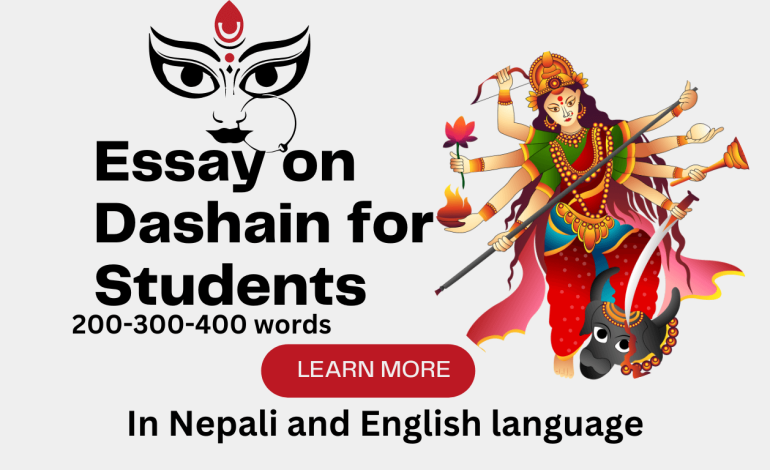
Table of Contents
Essay on Dashain in english language
Dashain, also known as Vijaya Dashami, is the biggest and most important festival celebrated in Nepal. It is a fifteen-day-long festival that falls in the months of September and October, and it is celebrated with great enthusiasm and fervor by people of all age groups and social backgrounds in Nepal.
Dashain is a festival that symbolizes the victory of good over evil. The festival is dedicated to the goddess Durga, who is believed to have defeated the demon Mahishasura. The festival also marks the end of the harvesting season and the beginning of the winter season in Nepal.
The first day of the festival, known as Ghatasthapana , is dedicated to planting a pot of barley seeds. The pot is kept in a sacred room, and it is watered every day until the tenth day of the festival, which is known as Vijaya Dashami . On this day, the barley shoots are about six inches tall, and they are used in various religious ceremonies.
The festival is celebrated with great pomp and show, and people prepare themselves for the occasion weeks in advance. Houses are cleaned and decorated with colorful lights, and people buy new clothes and jewelry for themselves and their loved ones. Special foods and sweets are prepared for the festival, and people exchange gifts and greetings with their friends and family.
One of the most important aspects of the festival is the tika ceremony, which takes place on the tenth day of the festival. It is a ritual where elders put a red vermillion paste on the forehead of their younger relatives as a blessing for their well-being and prosperity. This ceremony is a symbol of love, respect, and gratitude towards one’s elders.
Another important aspect of the festival is the playing of traditional music and dance performances. People gather in large groups to perform various folk dances, and musicians play traditional instruments such as the dhol and madal . These performances are a symbol of the rich cultural heritage of Nepal.
In conclusion, Dashain is a festival that brings people together to celebrate their culture, traditions, and values. It is a time for joy, happiness, and sharing, and it is a symbol of the unity and diversity of Nepal. The festival has great significance in the lives of the Nepalese people, and it is celebrated with great enthusiasm and fervor every year.
Essay on Dashain( दशैं ) In Nepali language( दशैं निबन्ध )
दशैं , जसलाई विजयादशमी पनि भनिन्छ, नेपालको सबैभन्दा ठूलो चाड हो। नेपाली मूलका हिन्दुहरूले विश्वभर मनाउने यो सबैभन्दा ठूलो र लामो चाड हो। यो प्रायः आश्विन महिना (सेप्टेम्बर/अक्टोबर) मा पर्छ। आश्विन सबै नेपालीको मुहारमा खुशी र मुस्कान ल्याउने महिना हो । यस समयमा सबै निजी र सरकारी संस्थाहरू बन्द हुनछन्। दशैं अमावास्यादेखि 10-15 दिनसम्म मनाइन्छ जसलाई घटस्थापना पनि भनिन्छ, पूर्णिमाको दिन कोजाग्रत पूर्णिमा भनिन्छ। यी दिनहरूमा घरबाट टाढा रहेका मानिसहरूले आफ्नो ठाउँ आउन समय पाउँछन्। यो रमाईलो, ठूलो उत्साह, चासो र अत्यधिक खुशीको पर्व हो।
दशैंको समय निकै रमाइलो हुने र मौसम सफा र हल्का हुने भएकाले सडकमा धुलो पनि हुँदैन । कृषकहरूले रोपाइँको थकित मौसमबाट आराम र राहत पाएका हुन्छन्। यस् समयमा दुर्गाले जनतामा भय र आतंक फैलाउने ‘ महिषासुर ’ नामक दुष्ट राक्षससँग लडाइँ हुन् । दशैंमा हामी असत्यमाथी सत्यको र अन्यायमाथि न्यायको विजयको सम्झना गर्छौँ । पहिलो नौ दिनमा शक्ति र विजयकी देवी नवदुर्गाको पूजा आराधना गरीने गरिन्छ । देवी दुर्गालाई समर्पित मन्दिरहरू सधैं भक्तहरूले खचाखच भरिएका हुन्छन्। चण्डी, सत्ययुगमा देवताहरूले भूतहरूमाथि प्राप्त गरेको विजयको कथा, यसको पवित्रता र पवित्रताको लागि पढाइन्छ। दुर्गा माताको पूजा गरेपछि त्रेतायुगमा भगवान रामले विजय प्राप्त गरेको जनविश्वास छ । बिदा पर्वको समयमा विजयादशमी , पर्वको दशौं दिन मुख्य दिन हो। यो एक दिन हो जब मानिसहरूले आफ्ना वरिष्ठहरूबाट आशीर्वाद लिन्छन् र रातो टिका, जमरा र आशीर्वाद लिन्छन्। हिन्दू संस्कृतिमा रातो टिका भाग्य र विजय दुवैको प्रतीक हो। दशैं पारिवारिक जमघट र चाडपर्वको समय पनि हो । यो सिजनमा विदेशमा रहेका मानिसहरु आफ्नो घर वा देश फर्कने गर्छन् ।
मानिसहरू आफ्नो परिवारलाई भेट्न जान्छन् र आफ्नो विवाद र गलतफहमीहरू पछाडि राख्छन्। केटाकेटीहरूले विशेष गरी यो चाडको आनन्द लिन्छन् किनभने यसले उनीहरूलाई लगभग ३० दिनको छुट्टी, उत्कृष्ट खाना, आफ्ना भाइबहिनीहरूलाई भेट्ने मौका र नयाँ लुगाहरू दिन्छ। परिवारका वरिष्ठ सदस्यहरूले सामान्यतया उनीहरूलाई दक्षिणा , एक प्रकारको उपहार र आशीर्वादको रूपमा नगद दिन्छन्। परिवारहरू भेला हुन्छन्, र केही खेलहरूमा भाग लिन्छन्। गाउँमा मनोरञ्जनका लागि बाँसका बलियो झुलाहरू पनि बनाइन्छ। चङ्गा उडाउँदा आकाश चङ्गाले भरिएको हुन्छ र रंगीन हुनछ। मानिसहरू नयाँ लुगा लगाउँछन् र मासु, पिटेको चामल, चकलेट, मसला र सेल रोटी खान्छन्। मालश्री संगीत बजिरहेको हुनछ। नतिजाको रूपमा, यो उत्सवले नेपाली जीवनशैलीलाई बलियो रूपमा प्रतिनिधित्व गर्दछ।
दशैं परोपकारको पर्व पनि हो । रेडियो, टेलिभिजन र पत्रपत्रिका जस्ता सञ्चारमाध्यमहरूद्वारा मनिसहरूको आफ्नै र प्रायोजित स्रोतहरूबाट शुभकामना र अभिवादनहरू प्रसारण वा प्रकाशित गर्छन् । काठमाडौंको टुँडिखेलमा फूलबारीसँगै गोली प्रहार भएको हुन्छ । राष्ट्र प्रमुखबाट टीका ग्रहण गर्ने चलन आम जनतामा छ ।तर दशैंले केही पापहरूलाई बढावा दिन्छ। यो पर्व धेरै मानिसहरुले भव्य रुपमा मनाउने गरेका छन् । उत्सवहरू प्रायः महँगो हुन्छन्। झगडा, झगडा र दुर्घटनाहरू प्रायः अत्यधिक रक्सी र जुवाको कारणले हुन्छन्। दशैंले गरिबलाई खुशी दिँदैन। उनीहरूलाई परम्परागत चाडपर्वहरूको लागि तिर्न निकै चुनौतीपूर्ण लाग्छ। कतिपय मानिसहरूको ज्यादतीले उनीहरूलाई दिवालिया बनाउँछ। देवीले केही उत्कृष्ट बलिहरू प्राप्त गर्नुभएको छ। दुर्घटना, खाद्य विषाक्तता, र अपच सामान्य मानव त्रासदीहरू हुन्। दशैंअघि पकेटिङ, डकैती, चोरीजस्ता कैयौं अपराधहरू हुने गर्छन्। चाडपर्वको अघिल्लो दिन र राति बजारमा भाउ बढ्छ ।
About Author
Roshan a passionate writer and creative thinker who excels in crafting captivating, educational, and inspirational stories with a keen eye for detail and a commitment to providing interesting information.

BLE Result 2079: Check Your District-Wise 8th Grade Exam Result Online
Upcoming toyota cars: a comprehensive guide to the latest models, leave a reply cancel reply.
Your email address will not be published. Required fields are marked *
Save my name, email, and website in this browser for the next time I comment.
Recent Posts
- How to Apply Driving License Form Online | applydl.dotm.gov.np
- Canva Pro Team Invite Link Free 2024: Design and Collaborate with Ease
- Bajaj NS 200 Price In Nepal – Images, Mileage, Colours
- Bajaj Dominar 400 Price in Nepal | Top Speed, Mileage, and Features
- Bajaj Bike Price In Nepal: All 12 Models Price List
Related Posts
Essay about My Country Nepal | 200,300,400 words
Nepal is a country located in South Asia, between India and China. It is a
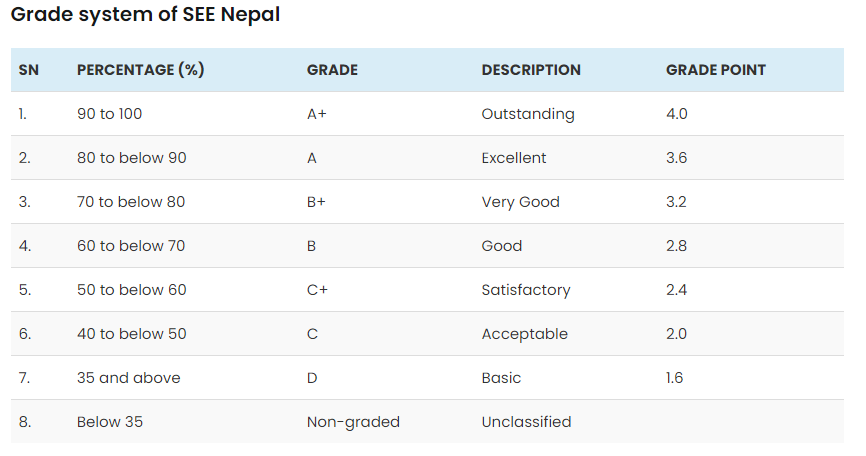
Grading System of Nepal |SEE Result
SEE stands for the Secondary Education Examination, which is a national level examination conducted in

From Resume Rookie to Pro: How to Build a Professional CV that
When you’re applying for a job, your CV (short for “curriculum vitae,” Latin for “the
- Joanna Gaines Ethnicity, Age, Height, Relationship, Biography, Net Worth
- 15 Shocking Facts about Nepal Which You Might Not Know
5 Best Reasons to Visit Boudhanath Stupa, Kathmandu – Nepal
- How to get to Nepal by Air? Best Flight Route to Nepal
World Of Nepal
Trending News

Destination
Category collection.

Essay on Dashain: The Festival of Unity
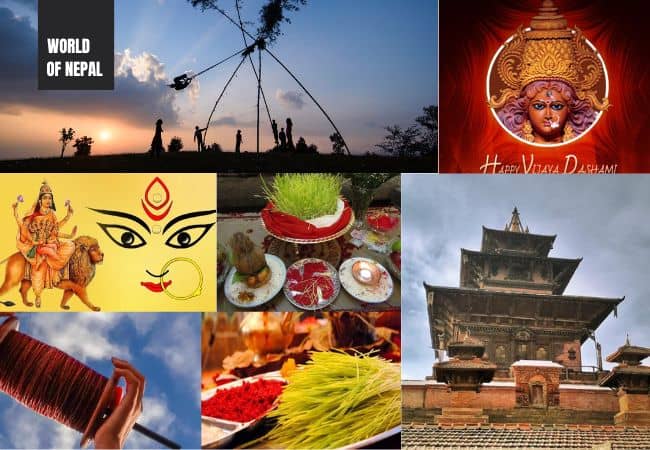
Biggest Festival of Nepali People – Dashai [2024 Updated]
Dashain represents unity, the win of truth, and the start of happiness. It generally falls in the Nepali month of Ashwin (September). This festival starts from Ghatasthapana and ends on the day of Vijaya Dashami. On the first day of Dashain, i.e. Ghatasthapana, people grow seedlings Known as, Jamara in the holy corner of their homes.
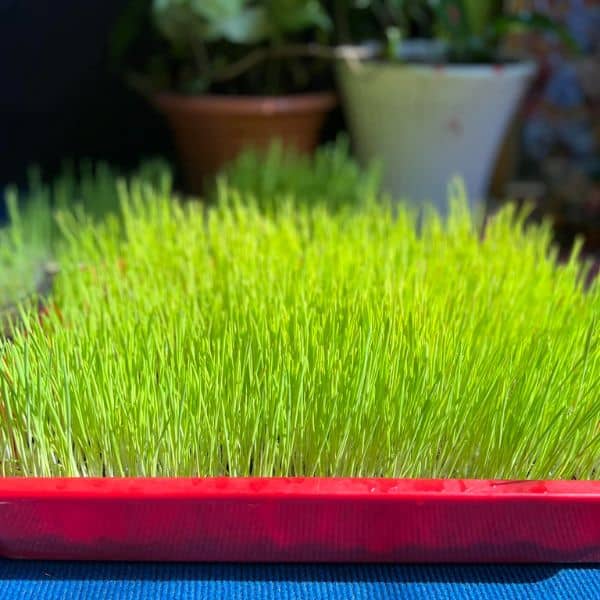
The first nine days of the festivals are known as Navaratri, where the goddess Durga is worshipped. The seventh day i.e. Fulpati is the day when the priest helps to bring the Jamara from the Gorkha Durbar to Hanuman Dhoka in Kathmandu. From the day of Fulpati until the ninth day, people offer goats, ducks, buffaloes, and other birds or animals as sacrifices to Goddess Durga. The tenth day or Vijaya Dashami is the main Tika Festival of Dashain.
The Taleju Temple, which is normally closed on the other day, is open once a year on the ninth day. Many worshippers visit the goddess to pay respect, all day long the temple is filled with worshippers.
Table of Contents
Day 10: Bijaya Dashami
On the main day of the festival i.e. Vijaya Dashami , people put Tika (made from red-colored rice seeds) on their forehead and Jamara on their head, receiving blessings for good health, long life, happiness, wealth, and prosperity. Elders bless younger relatives and give them Dakshina. The tradition of putting tika from all elderly relatives (even distant relatives) helps in the renewal of the community toes greatly. This is one of the reasons for the festivals for the strong and positive celebration.
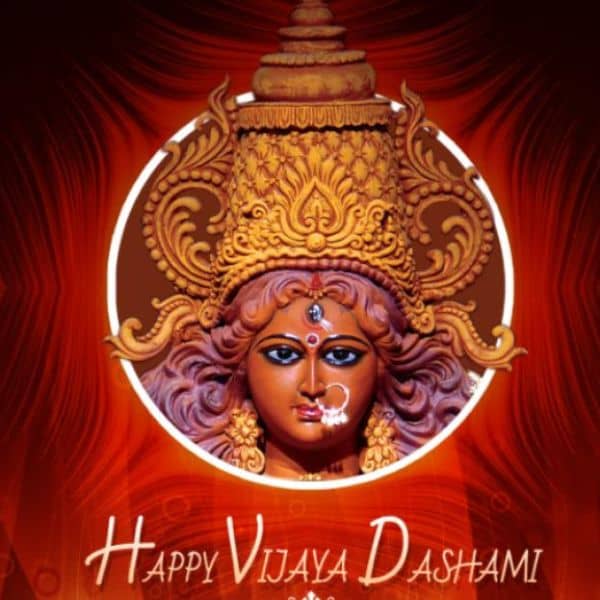
Dashain is a festival where families come together to celebrate and have fun. Schools, offices, and businesses are closed and the people who live far away return home to celebrate with their family.
When was Dashain Tika in 2023?
What is the biggest festival in nepal.
Dashain is one of the most important 15-day-long festivals celebrated in Nepal.
How many days do we celebrate Dashain?
Dashain is an auspicious festival which is celebrated for fifteen days throughout the country.
Destination: Olanchito: A Beautiful City in Honduras || Tourists Destination
Hi, I’m Sandika Rijal, and I have been working as a Content Creator for the last 2 years. I will be writing about my beautiful country Nepal, and its famous places, and people. Hope you will enjoy reading my articles!
Leave a Reply Cancel reply
Your email address will not be published. Required fields are marked *
Save my name, email, and website in this browser for the next time I comment.
Related News
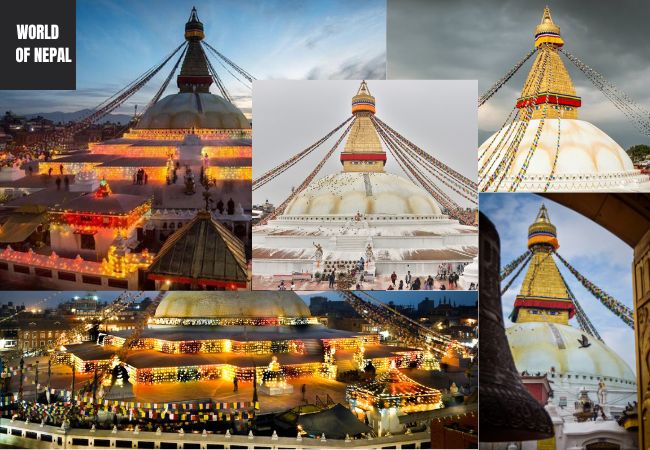
eKantipur Hosted Online Education Expo- A very first online Exhibition in Nepal
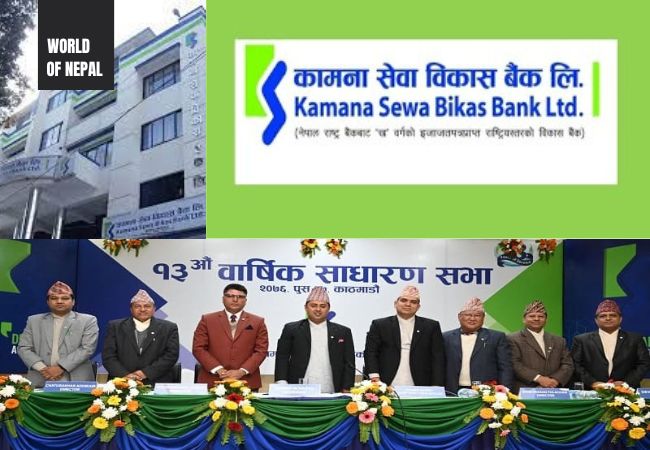
More New 3 Branches Of Kamana Sewa Bikas Bank In Chitwan District
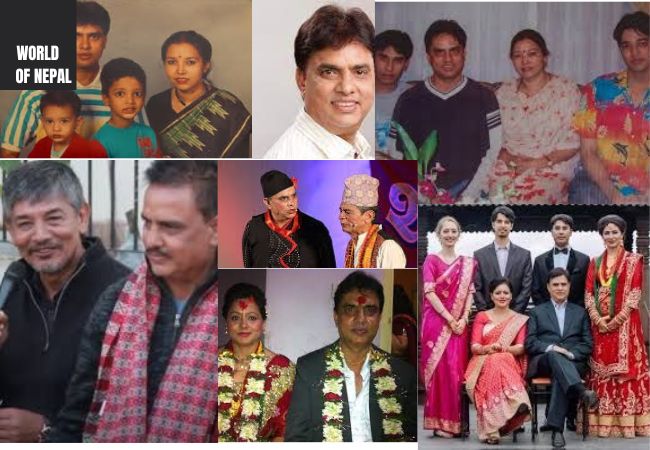
Hari Bansha Acharya Wiki, Bio, Ex-Wife, Mahapurush [Updated 2024]
Ace the Himalaya
Trekking in Nepal, Peak Climbing, Mt Biking and Tours in Nepal, Bhutan and Tibet
- Everest Base Camp Trek - 14 Days
- EBC Trek with Helicopter Return - 12 Days
- Everest Base Camp Luxury Trek - 14 Days
- Everest Base Camp with Island Peak - 19 Days
- Everest Three Passes Trek - 20 Days
- Annapurna Base Camp Trek - 13 Days
- Annapurna Circuit Trek - 19 Days
- Ghorepani Poon Hill Trek - 9 Days
- Manaslu Circuit Trek - 15 Days
- Gokyo to Everest Base Camp Trek - 17 Days

Dashain and Tihar (Greatest Festivals of Nepalese)
Nepal is a country rich in culture and traditions. The varieties of festivals and occasions we celebrate carry their own significance. The main festivals of Nepalese are the Dashain and the Tihar which they choose to celebrate with their close friends, relatives and family.
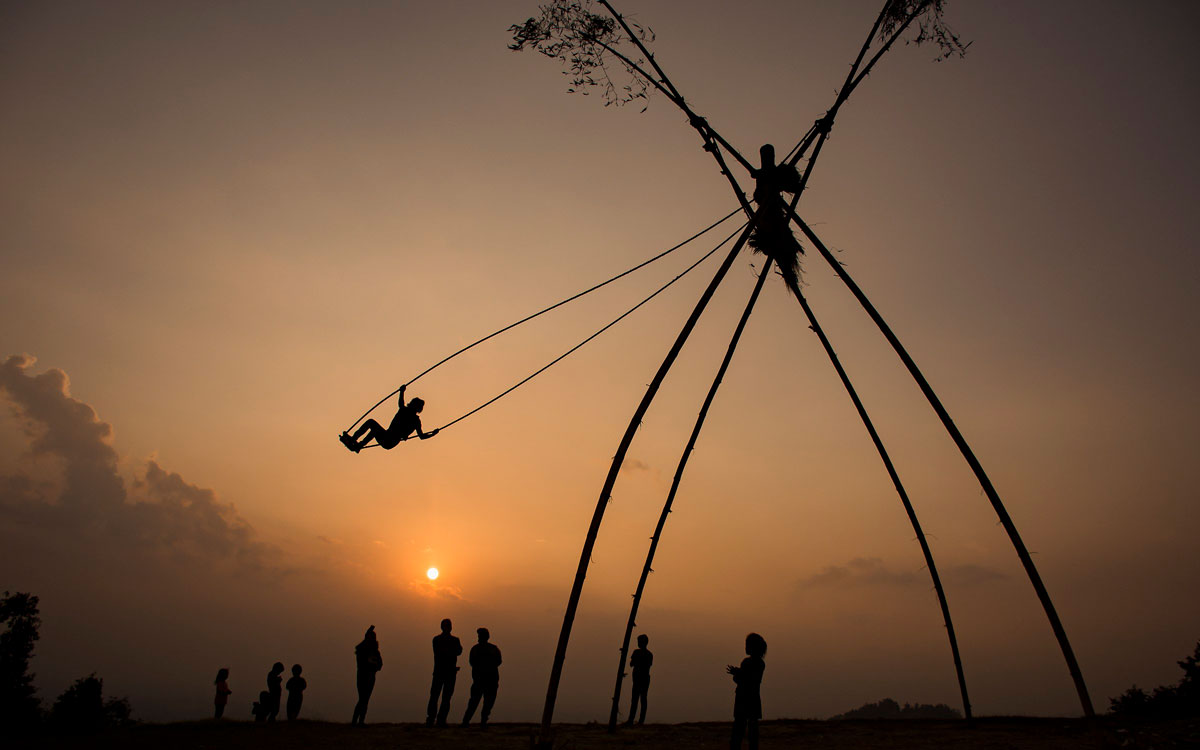
Dashain “The Greatest Festival of Nepalese”
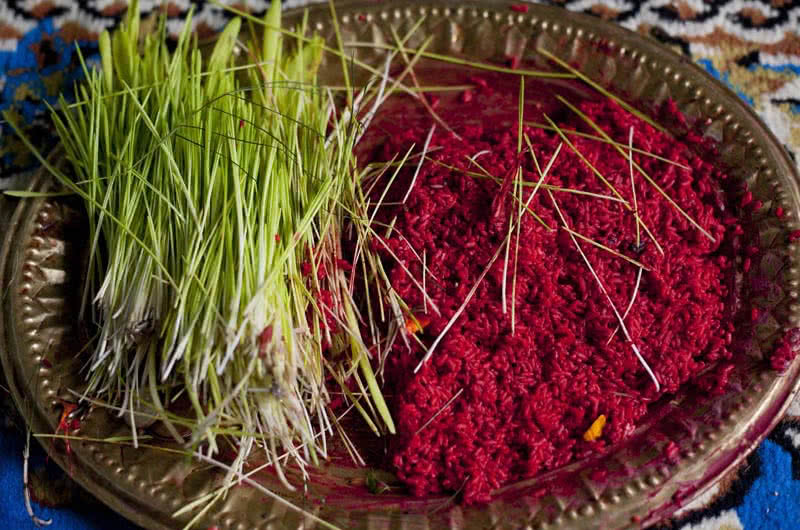
Among the festivals we celebrate, Dashain being the greatest one for Nepalese is always celebrated with the zeal and in joyful ways. It is celebrated almost for 15 days in the month of October; 1st, 7th, 8th, 9th and 10th days are the most important.
The 1st day is welcomed following the rituals of ‘Ghatsthapana’ by worshiping Goddess Durga for 9 consecutive days. The main day is called ‘Dashami’ which is also known as ‘Vijaya Dashami’, the day when Goddess Durga got victory over the demons. On this day the seniors of the family put ‘Tika’ and ‘Jamara’ giving blessings to their younger ones.
The special money given to the younger ones is received as ‘Dakchhina’. This day is like a family reunion where everyone enjoys with the varieties of food, playing cards, flying kites, etc. Dashain not only reunites the families and friends but it also gives the working people time to relax and enjoy with family.
Day 1 – Ghatasthapana: Invocation of Goddess Shailaputri:
Ghatasthapana marks the initiation of Dashain with the establishment of the sacred kalash (water-filled vessel). Goddess Shailaputri, the first manifestation of Goddess Durga, is worshipped on this day. She represents new beginnings and embodies the power of nature. Devotees seek her blessings for a prosperous and fruitful festival.
Day 2 – Dwitiya: Adoration of Goddess Brahmacharini:
On Dwitiya, Goddess Brahmacharini is revered. She symbolizes dedication, purity, and self-discipline. Worshipping her encourages devotees to embrace righteous paths and attain spiritual enlightenment.
Day 3 – Tritiya: Devotion to Goddess Chandraghanta:
Goddess Chandraghanta, worshipped on Tritiya, showcases her bravery and grace. Her half-moon-adorned forehead inspires courage. By honoring her, individuals seek protection from negativities and inner strength to overcome challenges.
Day 4 – Chaturthi: Reverence for Goddess Kushmanda:
Chaturthi is dedicated to Goddess Kushmanda, the creator of the universe. She radiates cosmic energy and blesses devotees with vitality and well-being. Her worship signifies the importance of energy and life force.
Day 5 – Panchami: Praise of Goddess Skandamata:
Goddess Skandamata, worshipped on Panchami, is the mother of Lord Skanda (Kartikeya). She represents motherly love and protection. Devotees seek her blessings for nurturing relationships and safeguarding their loved ones.
Day 6 – Shashthi: Reverence for Goddess Katyayani:
Goddess Katyayani, revered on Shashthi, epitomizes strength and courage. She is the warrior goddess who defeats evil forces. Worshipping her instills determination and the will to overcome adversities.
Day 7 – Saptami: Adoration of Goddess Kalaratri:
Goddess Kalaratri, worshipped on Saptami, embodies the fierce and destructive form of Durga. She annihilates darkness and negativity, paving the way for light and positivity in life. Her worship symbolizes the victory of good over evil.
Day 8 – Ashtami: Worship of Goddess Mahagauri:
On Ashtami, Goddess Mahagauri is venerated. She radiates purity and grace, signifying the triumph of righteousness. Her worship purifies the mind and soul, granting inner peace and spiritual growth.
Day 9 – Navami: Devotion to Goddess Siddhidatri:
Goddess Siddhidatri, worshipped on Navami, grants divine knowledge and spiritual enlightenment. She blesses devotees with achievements and accomplishments, both material and spiritual. Her worship symbolizes the culmination of the Navadurga manifestations.
Day 10 – Dashami (Vijaya Dashami): Celebration of Goddess Durga’s Victory:
Vijaya Dashami is the pinnacle of Dashain, honoring Goddess Durga’s victory over the demon Mahishasura. She represents the ultimate power of femininity and the vanquisher of evil forces. On this day, families come together to seek her blessings through the Tika and Jamara ceremony, symbolizing the triumph of good over evil.
Tihar “The Festival of Lights”
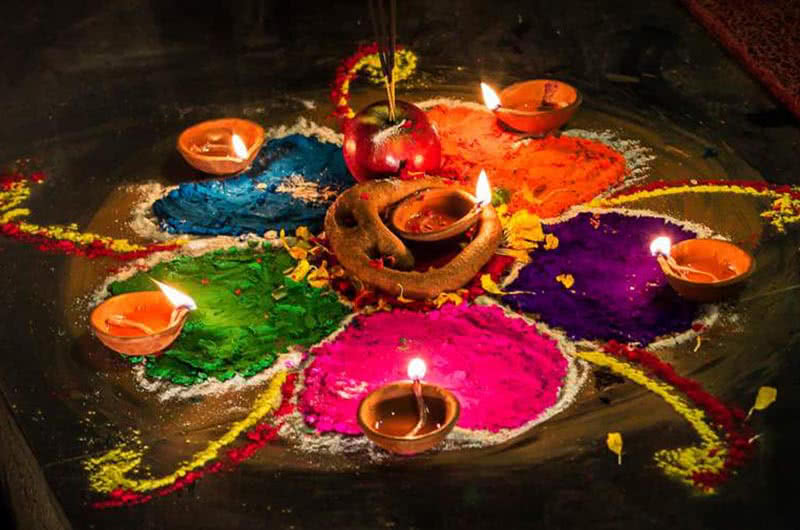
The festival usually falls in the month of October or November, celebrated for five days worshiping 4 different animals i.e. Kaag Tihar (Crow Tihar), Kukur Tihar (Dog Tihar), Gai Tihar (Cow Tihar)- the main day to worship the goddess of wealth, Laxmi, Goru Tihar (Ox Tihar) and the 5th day is celebrated as ‘ Bhaitika ’ which signifies and carries great importance for the love and concern between brothers and sisters.
The sisters put the seven colors Tika on the brother’s forehead and pray for their longer life and progress. Tihar always brings excitement and jolly mood in the families and friends; playing ‘Deusi-bhailo’ and trying the best to welcome goddess Laxmi, who is believed to bring the happiness and wealth in the life of everyone.
Related Blogs & Articles
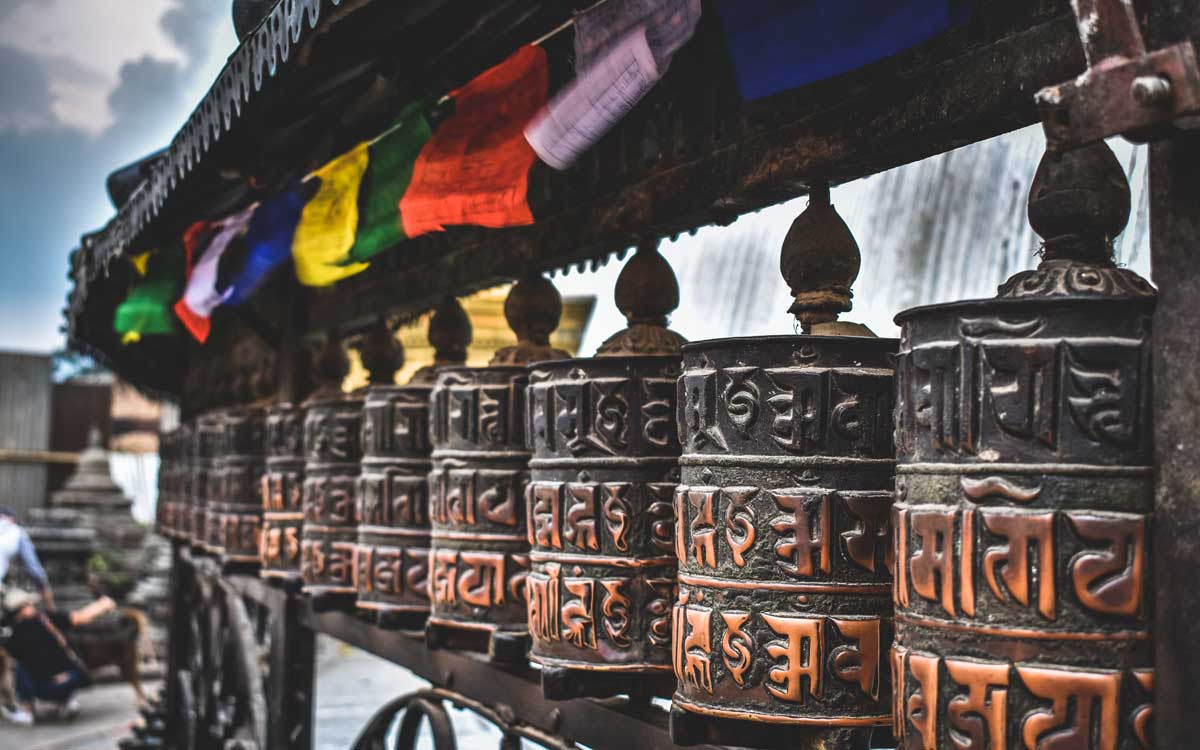
Kathmandu Valley- A City of Myths
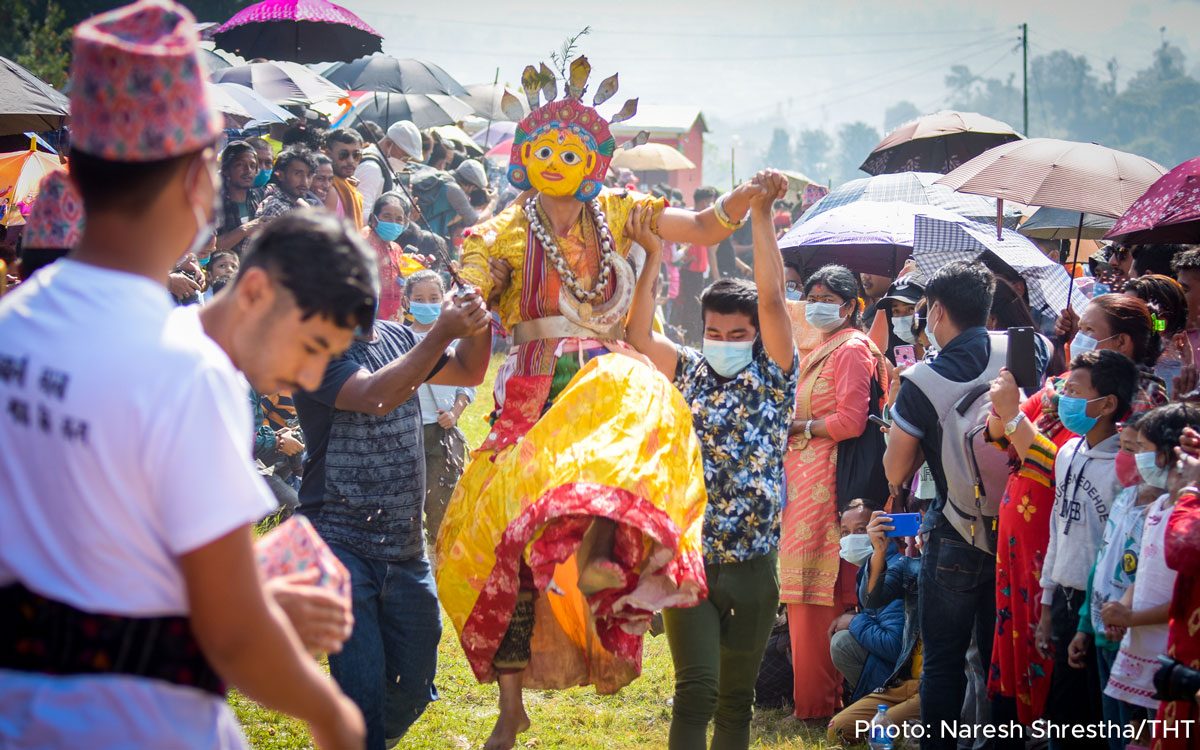
Shikali Jatra in Khokana
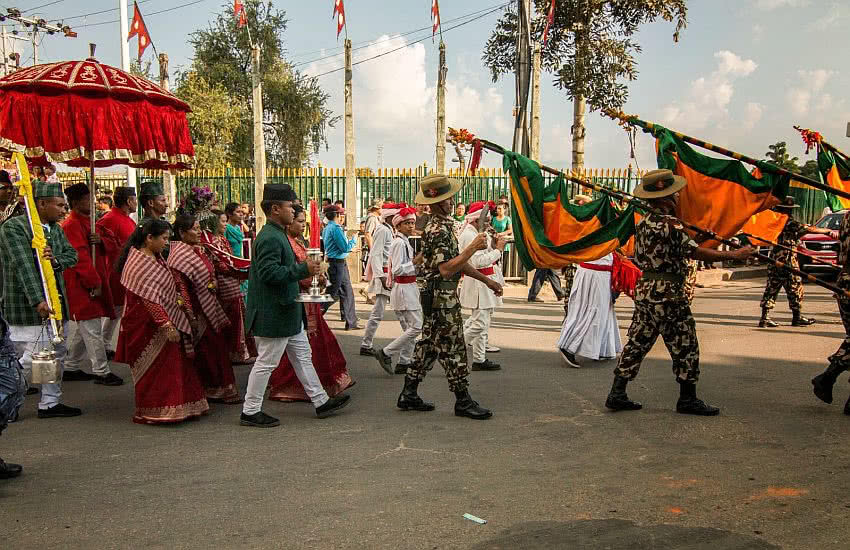
Dashain – Celebrating Victory of Good over Evil

- Name This field is for validation purposes and should be left unchanged.
Trekking in Nepal
Climbing and expedition, cultural tour and sightseeing, cycling and mountain biking, luxury treks, luxury tours, multi country tours, voluntourism trips, extend your trip.
- Everest Panorama Trek – 9 Days
- EBC Trek with Helicopter Return – 12 Days
- Everest Base Camp Trek – 14 Days
- Gokyo Lake Trek – 13 Days
- Gokyo and Renjo La Pass Trek – 14 Days
- Everest Base Camp Trek without Lukla Flight – 17 Days
- Gokyo to Everest Base Camp Trek – 17 Days
- Everest Base Camp with Island Peak – 19 Days
- Everest Three Passes Trek – 20 Days
- Everest High Passes and Island Peak – 23 Days
- Classical Everest Base Camp Trek – 21 Days
- Langtang Valley Trek – 10 Days
- Langtang Valley Ganja La Pass Trek – 14 Days
- Langtang Helambu Trek – 17 Days
- Ghorepani Poon Hill Trek – 9 Days
- Mardi Himal Trek – 10 Days
- Annapurna Base Camp Trek – 13 Days
- Himalayan Highlights – 13 Days
- Nar Phu Valley Trek with Annapurna Circuit – 18 Days
- Annapurna Circuit Trek – 19 Days
- Tilicho Lake Trek With Thorong La Pass – 19 Days
- Khopra Danda Trek – 11 Days
- Shivapuri-Chisapani Trek – 4 Days
- Upper Mustang Trek (Drive & Trek) – 16 Days
- Tsum Valley Trek – 16 Days
- Manaslu Circuit Trek – 15 Days
- Dhaulagiri Circuit Trek – 21 Days
- Upper Dolpo Trek – 25 Days
- Kanchenjunga Base Camp Trek – 29 Days
- Yala Peak Climbing – 13 Days
- Island Peak Climbing – 15 Days
- Mera Peak Climbing – 19 Days
- Everest Base Camp and Lobuche East – 18 Days
- Tent Peak Climbing with Annapurna Base Camp – 18 Days
- Pisang Peak and Thorung La Pass – 21 Days
- Ama Dablam Expedition – 29 Days
- Kathmandu Cultural Heritage Tour – 3 Days
- Kathmandu Heritage – 3 Days
- Inheritances of Kathmandu – 4 Days
- Glimpses of Kathmandu & Nagarkot – 5 Days
- Kathmandu and Pokhara Unveiled – 5 Days
- Explore Kathmandu – 6 Days
- Glimpse of Nepal – 8 Days
- Nepal Heritage Tour – 10 Days
- Nepal Adventure Tour – 11 Days
- Nepal Multi Sports Adventure – 11 Days
- Nepal Vista – 10 Days
- Nepal Highlights – 14 Days
- Experience Nepal – 15 Days
- One Day Biking Trip – Kathmandu – 1 Day
- Annapurna Circuit Biking – 14 Days
- Upper Mustang Biking – 16 Days
- Kathmandu Valley Rim Biking – 8 Days
- Annapurna in Luxury – 9 Days
- VVIP Everest Base Camp Trek – 10 Days
- Everest View Luxury Trek – 11 Days
- Everest Base Camp Luxury Trek – 14 Days
- Everest Base Camp Deluxe Trek – 16 Days
- Mt Everest Base Camp to Gokyo Trek – 19 Days
- Kathmandu Luxury Tour – 3 Days
- Kathmandu and Pokhara Luxury Tour – 5 Days
- Nepal Multi Sport Luxury Adventure – 11 Days
- Best of Nepal – 14 Days
- Trishuli River Rafting – 1 Day
- Everest Base Camp Helicopter Tour – 1 Day
- Everest Base Camp Heli Tour with Gokyo Extension – 1 Day
- Langtang Heli Sightseeing – 1 Day
- Pokhara and Annapurna Heli Sightseeing – 1 Day
- Paragliding in Nepal (Pokhara) – 1 Day
- Scenic Mountain Flight (Everest Flight) – 1 Day
- Ultra Light Flight – 1 Day
- Jamacho Day Hike-One day hiking trip – 1 Day
- Kathmandu Uncovered with Nagarkot – 1 Day
- Day Tour to UNESCO Heritage Sites – 1 Day
- Nepal and Tibet – 15 Days
- Nepal and Bhutan – 15 Days
- India, Nepal and Bhutan – 19 Days
- Nepal, Tibet and Bhutan – 20 Days
- Arupokhari School Volunteer Program – 14 Days
- Rebuild Home Volunteer Program – 9 Days
- Bardiya Jungle Safari – 4 Days
- Chitwan Jungle Safari – 3 Days
Trekking in Bhutan
Festival tours, motorcycling.
- Druk Path Trek – 8 Days
- Chomalhari Trek – 12 Days
- Laya Ghasa Trek – 18 Days
- Bhutan Vistas Tour – 5 Days
- Cultural Heartland Tour – 10 Days
- Hidden Valley – 11 Days
- Bhutan Multi Sports Tour – 11 Days
- Paro Tshechu Festival – 8 Days
- Punakha Tsechu – 9 Days
- Trongsa Lhuntse Tshechu – 9 Days
- Bumthang Tangbi – 11 Days
- Bhutan Ura Yakchoe – 12 Days
- Tamshingphala Choepa – 12 Days
- Mongar and Trashigang – 16 Days
- Bhutan Biking – 8 Days
- Bhutan Motorcycle Tour – 12 Days
Trekking in Tibet
- Tibet Advance Everest Base Camp – 21 Days
- Cho Oyu Expedition – 45 Days
- Shishapangma Expedition – 47 Days
- Everest Expedition via North Side – 63 Days
- Kathmandu and Lhasa Tour – 7 Days
- Tibet Heritage Tour – 8 Days
- Overland Tour to Everest Base Camp – 10 Days
- Mount Kailash Mansarovar Lake Tour – 15 Days
- Everest Base Camp Biking Tour – 21 Days

100 Words Essay on Dashain in English
Dashain is a Hindu festival. It is also known as Bada’dashain or Bijaya Dashami in Sanskrit. It to commemorate the day the goddess Durga killed demons known as Mahishasura – who were killing the world of the gods, the devaloka. People celebrate this festival for 7 days. The people celebrates this festival by rejoicing among relatives, flying kites, playing swings, and cards, and shopping. Apart from these activities, they offer the goat sacrifice in the name of goddess Durga too and they pay their visit to various Durga temples. This is one of the biggest festival in Nepal. Another fact to keep in mind regarding this very event is that Ginger, garlic, cardamom, cinnamon, cumin, nutmeg, coriander, bay leaf, fenugreek and pepper among others are consumed more during Dashain.
Related Posts:
- Random Pokemon Generator
- Write an Email to Your Friend Describing Your Plan of Dashain Vacation in English
- Howl Poem By Allen Ginsberg Summary, Notes and Line by Line Explanation in English
- Random University Name Generator
- Random Dog Breed Generator Tool


Celebrating Dashain Festival
by Editor | Nov 3, 2020 | Blog , Children , Culture

The Dashain Festival is one of the most important festivals in Nepali culture. It falls in September or October, lasting 10 days and ending on the full moon. It is a celebration of joy and the harvests as well as celebrating the fertility of the land and provision of food in the year to come. The festival symbolises the victory of good over evil in Hindu mythology, with the victory of the Goddess Durga over Mahishasura and the rakshas (demons).
On Monday the 26 th October our boys celebrated one of the most important days of the Dashain Festival, the Vijaya Dashami . Typically on this day, the tenth day of the festival, elder members of the family give their blessing to the youngsters by putting a red mixture called tika on their foreheads. They also give small amount of money to symbolise their good wishes for abundance in the year to come. The red colour of the tika, a mixture of rice, yogurt and vermillion, represents blood as a symbol of strong family ties.

They have also built a very tall bamboo swing called a ‘ ping ’, part of the Dashain celebrations, which represents the spirit of the festival with joy and fun. It is built by the community with traditional methods demonstrating the local culture, tradition and community spirit.
The Dashain Festival is of particular importance in Nepali culture because it strengthens not only the bonds within the family but also ties to the community. On this occasion, families reunite from all over the country as well as from all over the world. As expected, this year it’s been a bit different due to coronavirus. Unfortunately this has created many reasons people may not be able to celebrate such as mourning the loss of someone close to them, economic hardship caused by the pandemic, because they are unable to travel or perhaps unwell themselves. Thankfully we have made sure that the boys at Birgunj Children’s Home have still been able to celebrate one of the longest and most auspicious festivals in Nepal.
It fills us with joy to see our boys celebrating this wonderful day of the year; receiving their blessings and enjoying nutritious food which symbolises the arrival of the harvest.
To find out more about Our Sansar and the work we do in Nepal, please click here .
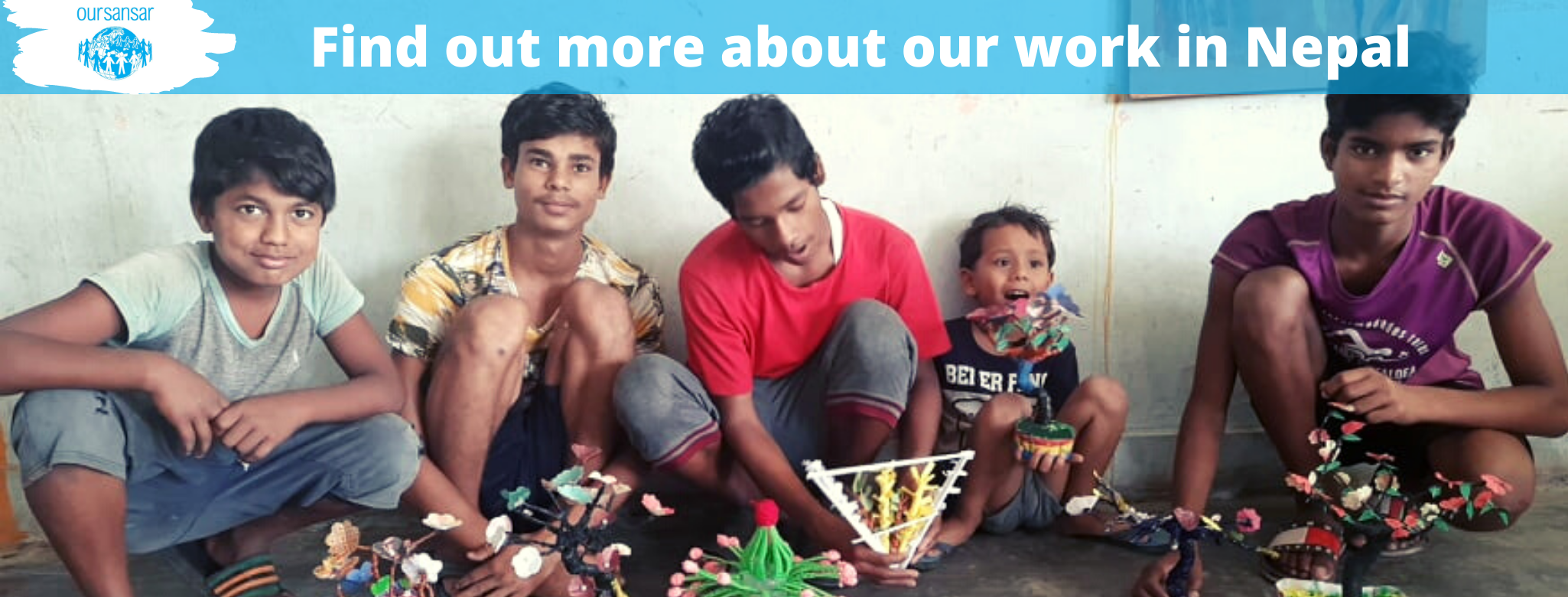
Recent Posts
- One donation, Twice the Impact!
- Our Sansar are finalists in the .ORG Impact Awards!
- Our Sansar wins at the Charity Awards 2023
- We’ve made it to the top 3!
- The Christmas Challenge 2022 is starting on the 29th November!
- October 2023
- November 2022
- November 2021
- February 2021
- January 2021
- December 2020
- November 2020
- October 2020
- September 2020
- August 2020
- October 2017
- September 2017
- August 2017
- December 2015
- November 2015
- October 2015
- August 2015
- January 2015
- December 2014
- October 2014
- August 2014
- February 2014
- January 2014
- December 2013
- November 2013
- October 2013
- September 2013
- August 2013
- January 2013
- December 2012
- November 2012
- August 2012
- January 2012
- October 2011
- September 2011
- December 2010
- October 2010
- October 2009
- September 2009
- Fundraising
- Team Member
- Uncategorized
- Volunteering
- Entries feed
- Comments feed
- WordPress.org
Privacy Overview
Want to hear how our projects and the children are getting on? Join our mailing list to stay up to date and hear our latest news.

Essay on Dashain | Dashain Essay - [2023 Updated]
Essay on dashain.

Dashain Essay in Nepali Language (नेपाली भाषामा दशैं निबन्ध ):
Dashain essay in 200 words:, frequently asked questions (faqs) about dashain in nepal:, 1. when is dashain in nepal in 2023 ad, 2. is there a public holiday in dashain festival, 3. do dashain festival and tihar fall on the same month, 4. is dashain a christian festival, hamro library, handpicked for you:, please leave your comment.
If this article has helped you, please leave a comment.
Post a Comment
Contact form.
- Reveel Protocol Potential Airdrop Backed by Binance
- KiloEX Confirmed Airdrop Invested By Binance Labs
- Chance of Getting Two Potential Airdrop | Backed by Polychain, BinanceLabs and Others
- Caldera Potential Airdrop Invested $9M By Sequoia Capital And Dragonfly
- Polyhedra Network Potential Airdrop biggest Investors are Binance Labs, Animoca Brand, Polychain
Greetinglines
Best Greetings For Loved Ones
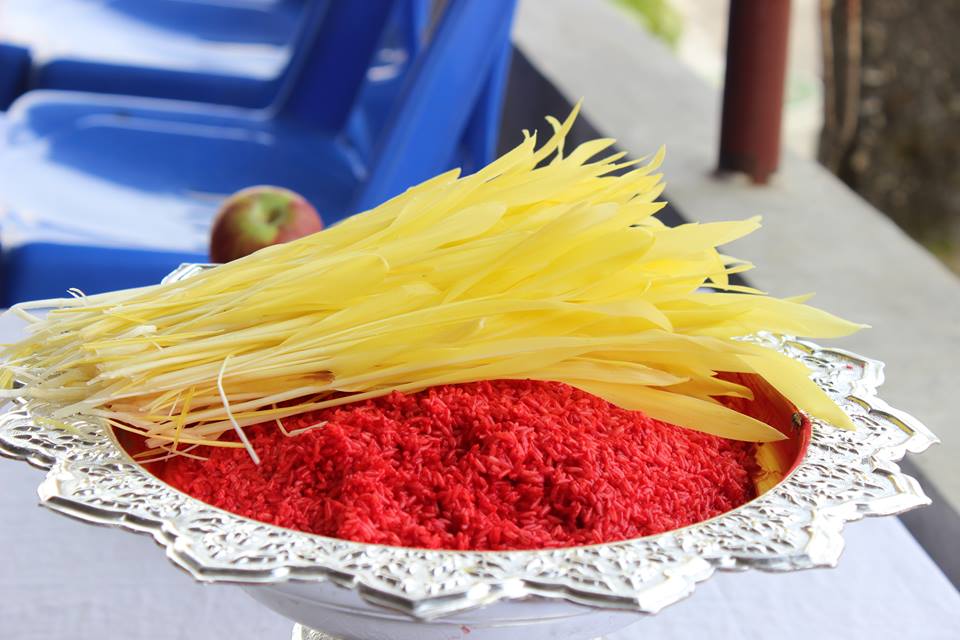
Essay on Dashain Festival – Dashain Festival Paragraph
Essay on dashain festival – 900+ words.
With the variety of cultures and traditions in Nepal, there are also many festivals that come along with it. Nepal especially is a Hindu country with most of its residents being Hindus. And with that, we have a Dashain festival . Dashain is the country’s most widely celebrated festival by all Nepalese. It is not only limited to Hindus but also other people with different cultural backgrounds. Dashain is the longest and most celebrated festival in Nepal. Dashain is also called in different names such as Dasain, Vijaya Dashami, and Dashera (India). Even if the names differ from place to place, people celebrate Dashain with the same zeal and enthusiasm.
In general terms, Dashain is the celebration of the victory of good over evil. This festival symbolizes that the good always prevails over the bad. This festival signifies unity, the victory of truth, and the inception of happiness. It is the most auspicious festival that is celebrated over a fortnight. Nepalese workers working abroad take long leaves and return back to their homes to celebrate the festival. The festival falls in September or October, starting from the Shukla Paksha (bright lunar fortnight) of the month of Ashwin and ending on Purnima, the full moon.
📌 Another Essay – Essay on Pollution
Among the fifteen days on which it is celebrated, the most important days are the first, seventh, eighth, ninth, tenth, and fifteenth. In Hindu Mythology the festival of Dashain represents the victory of the Goddess Durga over the demon named Mahishasura which had created terror in the world where gods lived (Devaloka). The first nine days of the Dashain symbolizes the battle which took place between them while on the tenth day, Goddess Durga finally killed the demon. There is also another mythology where this festival symbolizes the victory of Ram over Ravan which is recorded in Ramayana.
The first day of Dashain is called Ghatasthapana While the last day is also known as Bijaya Dashami. On the first day of Dashain, Ghatasthapana, priests worship and pray to Goddess Durga to bless her presence in a pot (Kalash) which is filled with holy water. The seeds of Barley, wheat, rice are also planted which is later important for the festival. The seventh day of Dashain is known as Phulpati. It is one of the major celebrations occurring In Dashain. In Fulpati, the royal Kalash (bronze pot) filled with holy water, banana stalks, Jamara, and sugar cane tied with red cloth is carried by Brahmans on a decorated palanquin under a gold-tipped and embroidered umbrella.
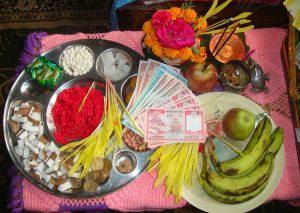
The government officials also join the Fulpati parade. There is also a majestic display of the Nepalese Army along with a celebratory firing of weapons that continues for ten to fifteen minutes honoring Phulpati on the public grounds of Tudikhel. With this, the Dashain feasting starts. The eighth day of Dashain is known as Maha Ashtami. On this day, people start to sacrifice buffaloes, goats, hens, and ducks in temples throughout the nation. This is done to appease the bloodthirsty goddess Kali, who is Goddess Durga’s most fierce manifestation. Animals throughout the nation are sacrificed.
The government also approves of the sacrifice. The amount of sacrifices done is tremendous. After the blood is offered to the Goddess, the meat is taken home and eaten as food blessed by the divinity. The ninth day of Dashain is called Mahanavami. On this day Vishvakarman, the god of creation is worshiped as it believed that all the things which help us in making a living should be kept happy. So on this special day, vehicles and other pieces of equipment are offered fowl blood and prayers are done in hopes of having a safe time wherever. The tenth day of Dashain, Bijaya Dashami is the most awaited day for all.
It is a grand day where People put on new and fine clothes and visit neighbors and relatives (superior) to pay respect and get blessings from elders. The elders put on Tika (a mixture of yogurt, rice, colors) on the forehead of the younger. They are generally red in color as it symbolizes the blood that ties the family together. They bless their younger generation and also hand out sums of money (Dakshina). After putting the Tika on The forehead they also put green plants grown with hybrid seeds of rice, maize, barley, and others. This green plant is Jamara and used as the flower in Dashain. This is a joyous festival where people get together, eat and drink and celebrate to their heart’s content.
They forget their worries and indulge themselves in joy. The schools, offices, workplaces are closed and people come and celebrate the festival with their kiths and kins. The most excited for this festival are also kids. Some get new clothes and eat delicious foods, they get to travel around places to visit their relatives and enjoy the livelihood. This celebration goes on till the 15th day of Dashain where it ends. The great festival of Nepal ends like this, with great enthusiasm and joy people wait for the next year for the Dashain celebration.
Everything has a dark side, and so does Dashain. People believe that Dashain is a festival for the grand, and everything they do must be grand. It is not necessary to buy new clothes or expensive jewelry or receive and give heavy sums of money. We must celebrate festivals with what we have and celebrate them joyously. People also indulge in heavy drinking and gambling activities as well. Even more so, the amount of sacrifices during this festival is sky-high numbers. There are also protest and campaigns where people urge the government to stop the sacrificial ceremony of the animals and offer fruits instead. The festival of Dashain is to be celebrated with great zeal and is not to be hampered by social evils and malpractices.
Other Essays
- Essay on Christmas Day
- Essay on Teej Festival
- Essay on Health is Wealth

You May Also Like

An Arithmetic Essay To Find Inverse of A Function
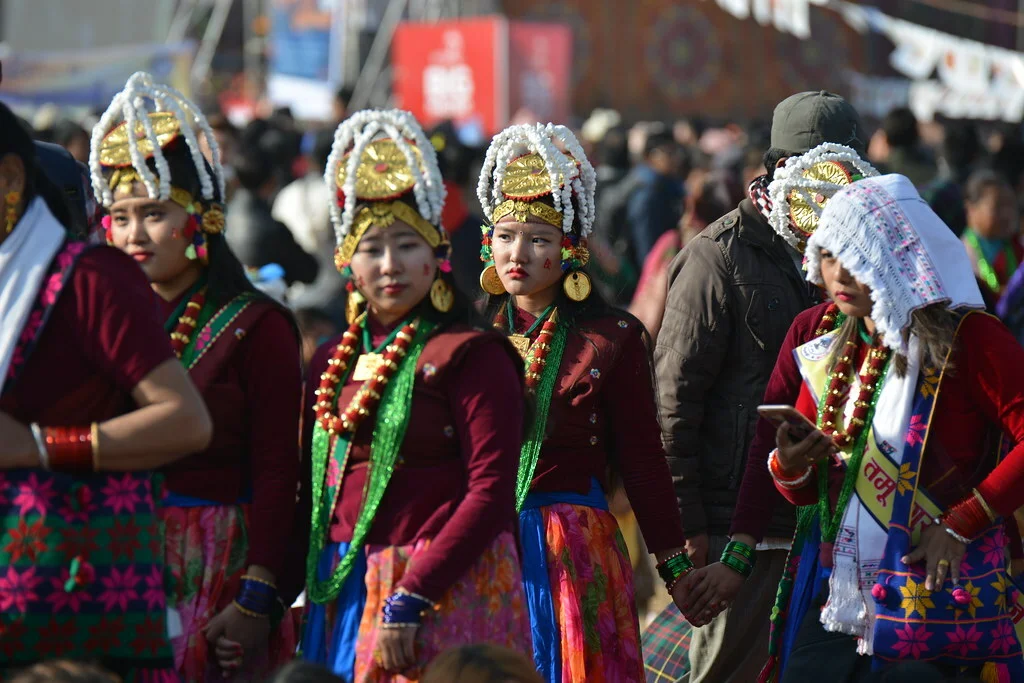
Essay on Tamu Lhosar
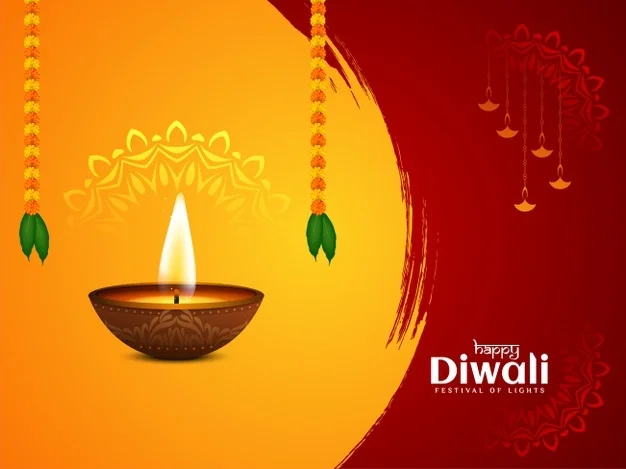
Essay on Diwali | 500+ Words Paragraph on Diwali
One thought on “ essay on dashain festival – dashain festival paragraph ”.
Leave a Reply Cancel reply
Your email address will not be published. Required fields are marked *
Save my name, email, and website in this browser for the next time I comment.
Featured Topics
Featured series.
A series of random questions answered by Harvard experts.
Explore the Gazette
Read the latest.

Roger Ware Brockett, 84

Providing community support

A change of mind, heart, and soul
So how do you track spread of disease by the numbers.

Kris Snibbe/Harvard Staff Photographer
Anne J. Manning
Harvard Staff Writer
Ivan Specht decided to employ his love of math during pandemic, which led to contact-tracing app, papers, future path
Part of the commencement 2024 series.
A collection of stories covering Harvard University’s 373rd Commencement.
Ivan Specht started at Harvard on track to study pure mathematics. But when COVID-19 sent everyone home, he began wishing the math he was doing had more relevance to what was happening in the world.
Specht, a New York City native, expanded his coursework, arming himself with statistical modeling classes, and began to “fiddle around” with simulating ways diseases spread through populations. He got hooked. During the pandemic, he became one of only two undergraduates to serve on Harvard’s testing and tracing committee, eventually developing a prototype contact-tracing app called CrimsonShield.
Specht took his curiosity for understanding disease propagation to the lab of computational geneticist Pardis Sabeti , professor in Organismic and Evolutionary Biology at Harvard and member of the Broad Institute, known for her work sequencing the Ebola virus in 2014 . Specht, now a senior, has since co-authored several studies around new statistical methods for analyzing the spread of infectious diseases, with plans to continue that work in graduate school.
“Ivan is absolutely brilliant and a joy to work with, and his research accomplishments already as an undergraduate are simply astounding,” Sabeti said. “He is operating at the level of a seasoned postdoc.”
His senior thesis, “Reconstructing Viral Epidemics: A Random Tree Approach,” described a statistical model aimed at tackling one of the most intractable problems that plague infectious disease researchers: determining who transmitted a given pathogen to whom during a viral outbreak. Specht was co-advised by computer science Professor Michael Mitzenmacher, who guided the statistical and computational sections of his thesis, particularly in deriving genomic frequencies within a host using probabilistic methods.
Specht said the pandemic made clear that testing technology could provide valuable information about who got sick, and even what genetic variant of a pathogen made them sick. But mapping paths of transmission was much more challenging because that process was completely invisible. Such information, however, could provide crucial new details into how and where transmission occurred and be used to test things such as vaccine efficacy or the effects of closing schools.
Specht’s work exploited the fact that viruses leave clues about their transmission path in their phylogenetic trees, or lines of evolutionary descent from a common ancestor. “It turns out that genome sequences of viruses provide key insight into that underlying network,” said the joint mathematics and statistics concentrator.
Uncovering this transmission network goes to the heart of how single-stranded RNA pathogens survive: Once they infect their host, they mutate, producing variants that are marked by slightly different genetic barcodes. Specht’s statistical model determines how the virus spreads by tracking the frequencies of different viral variants observed within a host.
As the centerpiece of his thesis, he reconstructed a dataset of about 45,000 SARS-CoV-2 genomes across Massachusetts, providing insights into how outbreaks unfolded across the state.
Specht will take his passion for epidemiological modeling to graduate school at Stanford University, with an eye toward helping both researchers and communities understand and respond to public health crises.
A graphic designer with experience in scientific data visualization, Specht is focused not only on understanding outbreaks, but also creating clear illustrations of them. For example, his thesis contains a creative visual representation of those 45,000 Massachusetts genomes, with colored dots representing cases, positioned nearby other “dots” they are likely to have infected.
Specht’s interest in graphics began in middle school when, as an enthusiast of trains and mass transit, he started designing imagined subway maps for cities that lack actual subways, like Austin, Texas . At Harvard, he designed an interactive “subway map” depicting a viral outbreak.
As a member of the Sabeti lab, Specht taught an infectious disease modeling course to master’s and Ph.D. students at University of Sierra Leone last summer. His outbreak analysis tool is also now being used in an ongoing study of Lassa fever in that region. And he co-authored two chapters of a textbook on outbreak science in collaboration with the Moore Foundation.
Over the past three years, Specht has been lead author of a paper in Scientific Reports and another in Cell Patterns , and co-author on two others, including a cover story in Cell . His first lead-author paper, “The case for altruism in institutional diagnostic testing,” showed that organizations like Harvard should allocate COVID-19 testing capacity to their surrounding communities, rather than monopolize it for themselves. That work was featured in The New York Times .
During his time at Harvard, Specht lived in Quincy House and was design editor of the Harvard Advocate, the University’s undergraduate literary magazine. In his free time he also composes music, and he still considers himself a mass transit enthusiast.
In the acknowledgements section of his thesis, he credited Sabeti with opening his eyes to the “many fascinating problems at the intersection of math, statistics, and computational biology.”
“I could fill this entire thesis with reasons I am grateful for Professor Sabeti, but I think they can be summarized by the sense of wonder and inspiration I feel every time I set foot in her lab.”
Share this article
You might like.
Memorial Minute — Faculty of Arts and Sciences
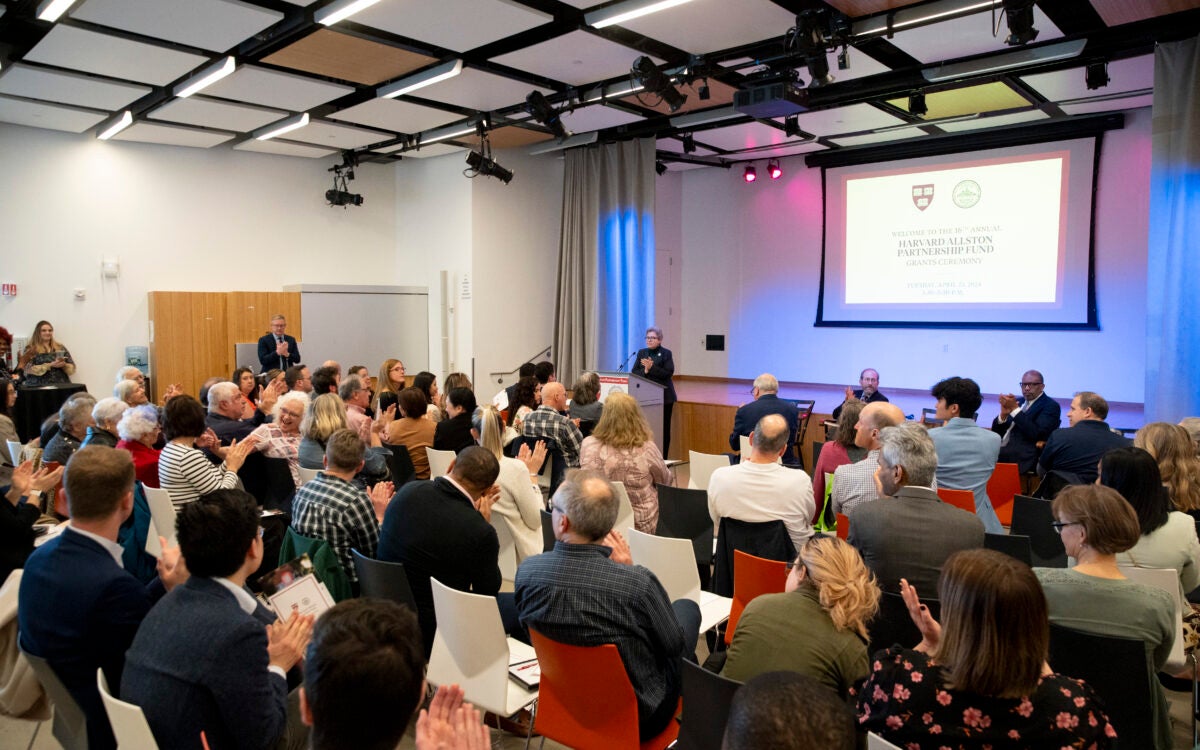
Harvard Allston Partnership Fund awards grants to 26 Allston-Brighton nonprofits

Choosing Harvard took LyLena Estabine down an uncertain path. The former student co-president has no regrets.
How old is too old to run?
No such thing, specialist says — but when your body is trying to tell you something, listen
Excited about new diet drug? This procedure seems better choice.
Study finds minimally invasive treatment more cost-effective over time, brings greater weight loss
How far has COVID set back students?
An economist, a policy expert, and a teacher explain why learning losses are worse than many parents realize

- Join the AMA
- Find learning by topic
- Free learning resources for members
- Certification
- Training for teams
- Why learn with the AMA?
- Marketing News
- Academic Journals
- Guides & eBooks
- Marketing Job Board
- Academic Job Board
- AMA Foundation
- Diversity, Equity and Inclusion
- Collegiate Resources
- Awards and Scholarships
- Sponsorship Opportunities
- Strategic Partnerships
We noticed that you are using Internet Explorer 11 or older that is not support any longer. Please consider using an alternative such as Microsoft Edge, Chrome, or Firefox.

Call for Papers | Journal of International Marketing: Marketing’s Role in the Management of Fast-Evolving Global Supply Chains

Globalization and digitalization have reshaped global supply chain operations (Alicke et al. 2023). In particular, geopolitical disruptions such as the China–U.S. trade war, Brexit, and Middle East tensions have triggered the reconfiguration of global supply chains for many global companies (Bednarski et al. 2023; Henrich et al. 2022). The Russia–Ukraine war has further accelerated the decoupling between the U.S. and China as well as between the West and Russia. In this rapidly changing and uncertain environment, Apple, for example, has considered reshoring some of its manufacturing back to the United States. Other global companies are also considering a “China + 1” or “China + 2” strategy for their contract manufacturing operations. Such strategies allow international marketing managers to keep some of their manufacturing in China while establishing new production locations, often with the same suppliers, in countries such as Vietnam, India, or Mexico, where political risks and labor costs are more manageable (Vertinsky et al. 2023). Other external shocks and natural disasters such as the COVID-19 pandemic and earthquakes have disrupted firms’ supply chain operations around the world (Panwar, Pinkse, and De Marchi 2022). For example, demand for in-person restaurant dining has decreased, whereas demand for food delivery and home-based consumption has greatly increased (Jeong et al. 2023), forcing multinationals like KFC and McDonalds to modify their operations in host markets. Under such market changes, firms need to explore new ways of organizing their global supply chains with respect to factors like product diversity and cooperation with more partners in the supply chains and ecosystems around the world (Davis et al. 2023; Henrich et al. 2022). These challenges highlight the critical need for international marketing managers to improve planning and forecasting for their global supply chains to be more agile and resilient.
Furthermore, shareholders and stakeholders have been demanding greater accountability from companies, pressing international marketing managers to take responsibility for the environmental, social, and governance (ESG) impacts of their global supply chain and manufacturing activities and to ensure that they’re doing business in an ethical, sustainable, and fair fashion (Henrich et al. 2022). While marketing’s approach to this new expectation varies by country, the market now expects the same standards to be enforced throughout a company’s global supply chain. Accordingly, the stakeholders of global brands, who often hold strong expectations regarding appropriate ESG-related behaviors, have begun scrutinizing not only the firms selling the branded products worldwide but also their entire global supply chains (Mateska et al. 2023).
In the meantime, the emergence of advanced technologies such as AI and Industry 4.0 bring about great opportunities for international marketing managers to coordinate and configure their global supply chains automatically (Alicke et al. 2023; Ejaz and Hegedűs 2023; Lee et al. 2023). For example, Unilever uses an AI application and service to find alternative supply sources on short notice. Koch Industries, one of the largest privately held conglomerates in the U.S., is leveraging an AI tool to optimize its supplier base. Industry 4.0 can also help international marketing managers enhance their resilience to cope with global supply chain disruptions (Tan 2023). Further, cloud computing and blockchain technologies also help integrate a firm’s supply chain partners; enhance the transparency, efficiency, and timeliness of global supply chain activities; and enable international marketing managers to cope with communication barriers in the market. However, there is a potential downside: When there are unanticipated natural disasters or geopolitical tensions (Henrich et al. 2022), minimizing potential interruptions in such optimized, digitalized, and complex global supply networks may pose major challenges. Thus, managing global supply chains in the era of digitalization emerges as a critical and challenging task for international marketing managers.
Despite these emerging challenges and opportunities for international marketing managers, academic research on these areas is limited. Most academic work on supply chain management has focused on domestic context and overlooks how different formal and informal institutions would shape firms’ global supply chain strategies (Usui, Kotabe, and Murray 2017). Specifically, little research attention has been paid to how global supply chains can be managed to improve the flow of supplies from the perspective of international marketing, how firms can cope with emerging managerial challenges, or how international marketing managers can take advantage of new opportunities in their global supply chains. To fill this gap, there is an urgent need to develop new theories, modify existing theories, and determine how firms can manage their global supply chains in the face of emerging trends of globalization and digitalization.
Suggested Topics for Submissions
We encourage research on any aspect of global supply chain management from the perspective of international marketing at all levels of analysis, such as the individual employee or entrepreneur, firms, supply chains, platforms as well as ecosystems. Different types of firms (e.g., multinationals, regionals, local importers/exporters, suppliers, key account customers, born-globals, virtual vs. physical firms) and different institutional (e.g., formal, informal, government, trading blocs) and regional settings are encouraged. We call for more interdisciplinary and foundational research to expand the knowledge base of global supply chains in international marketing. We invite all types of research—qualitative, behavioral, and empirical—and encourage researchers to identify multiple sources of data and use multiple methods for this special issue. Conceptual papers and critical reviews are also welcome.
Suggested topics include, but are not restricted to:
- How can international marketing managers effectively control the governance mechanism and, thus, manage relationships with different global supply chain participants and members in the ecosystem across different countries to mitigate emerging geopolitical disruptions?
- How can international marketing managers leverage emerging technologies like AI, blockchain, machine learning, virtual reality, and big data for global supply chain management? What is the role of those emerging technologies for international marketing managers in coping with the challenges in the global supply chain activities?
- What is the role of digitalization (e.g., EDI, internet-based platforms, virtual meetings, social networks) in global supply chains in seeking efficiency, timeliness, as well as agility for international marketing managers?
- What is the role of blockchain and decentralized technologies in global supply chains, and how do they affect interorganizational relationships and efficiency in global supply chains?
- What marketing strategies, resources, and capabilities are needed for different types of firms to manage global supply chains given recent technological, geopolitical and other changes?
- What is the role of different institutional contexts in global supply chain management strategies?
- Can informal institutions such as culture and norms in different countries affect global supply chain management strategies?
- How do ESG initiatives and requirements shape firms’ global supply chain management? How can firms develop strategies and resources to meet ESG requirements for their global supply chains?
- How do suppliers or contract manufacturers manage their global account relationships across different countries in the uncertain global market environment?
- How does marketing–supply chain integration affect firms’ global supply chain management given recent changes? Has the role of marketing changed in global supply chain management—and if so, how?
- What are the impacts and implications of advanced technology and technology-based platforms on a firm’s globalization of its supply chain activities?
- What is the impact of digital technologies in offshoring, onshoring, and reshoring of a firm’s manufacturing activities?
- What are the global, regional, and local market implications of reshoring of a firm’s manufacturing activities for international marketing managers and for managing global supply chains?
Submission Process
All manuscripts will be reviewed as a cohort for this special issue of the Journal of International Marketing . All submissions will go through the Journal of International Marketing’s double-anonymized review and follow standard norms and processes. Submissions must be made via the journal’s ScholarOne site , with author guidelines available here . For any queries, feel free to reach out to the special issue editors.
Manuscripts must be submitted between December 1, 2024 and March 1, 2025.
Guest editors.
Daekwan Kim ([email protected]) is Spencer-Feheley MBA Professor in the College of Business at Florida State University and a Visiting Eminent Scholar at Kyung Hee University in Seoul, Korea. His research interests include the impact of IT and Industry 4.0 on interfirm relationships and relational performance, marketing/international marketing strategies, and international buyer–seller relationships. His research has appeared in the Journal of International Business Studies, Journal of Academy of Marketing Science, Decision Sciences Journal, Industrial Marketing Management, Journal of Business Research, Journal of International Marketing, Journal of World Business, Management International Review, International Marketing Review, International Business Review, and others. He is currently a Senior Editor of International Business Review and an Associate Editor of Decision Sciences Journal, and serving on the editorial boards of Journal of International Business Studies, Industrial Marketing Management, Journal of Business Research, Journal of International Marketing, and Thunderbird International Business Review.
Ruey-Jer “Bryan” Jean ([email protected]) is Distinguished Professor of International Business at the Department of International Business, National Taiwan University, Taipei. He received his PhD from University of Manchester, UK. His research focuses on interorganizational relationship management and international new ventures in digital and data-rich environments, with a focus on emerging markets. He has published widely in peer-reviewed academic journals, including the Journal of International Business Studies, Journal of Management Studies, Journal of World Business, Management International Review, International Business Review, International Marketing Review, Journal of Business Research, Journal of International Management, and Journal of International Marketing. He is currently an Associate Editor of International Marketing Review and serving on the editorial boards of Journal of Business Research, International Business Review, and Asia Pacific Journal of Management.
S. Tamer Cavusgil ([email protected]) is Regents’ Professor and Fuller E. Callaway Professorial Chair and Executive Director, CIBER, Robinson College of Business, Georgia State University. A trustee of Sabanci University in Istanbul, Türkiye. Tamer authored more than several dozen books and some 200 refereed journal articles. He mentored over 40 doctoral students at Michigan State and Georgia State who have become accomplished educators around the world. Tamer holds an honorary doctorate from The University of Hasselt and the University of Southern Denmark, in addition to being named as an Honorary Professor by Atilim University in Ankara, Türkiye. He is an elected Fellow of the Academy of International Business. Tamer holds a Bachelor of Science degree from the Middle East Technical University in Ankara, Türkiye. He earned his MBA and PhD from the University of Wisconsin.
Ayşegül Özsomer ([email protected]) Ayşegül Özsomer is Professor of Marketing at Koç University, Istanbul, Türkiye. She specializes in global marketing, branding, emerging markets and the role of marketing in tough economic times. She has published in top scholarly journals including the Journal of Marketing, Journal of Marketing Research, International Journal of Research in Marketing, and Journal of International Marketing. Ayşegül received several research awards including the 2011 Gerald Hills Best Paper Award for ten-year impact on entrepreneurship research, the 2013 Cavusgil Award for her paper investigating the interplay between global and local brands, and the 2023 Cavusgil Award for her paper on marketing agility. She has held visiting scholar positions at the University of Michigan, Ann Arbor, the Anderson Graduate School of Management, UCLA, and Harvard University. Her co-authored book, The New Emerging Market Multinationals: Four Strategies for Disrupting Markets and the Competition (McGraw Hill) was selected the best strategy book by Business+Strategy.
Alicke, Knut, Tacy Foster, Katharina Hauck, and Vera Trautwein (2023), “Tech and Regionalization Bolster Supply Chains, but Complacency Looms,” McKinsey (November 3), https://www.mckinsey.com/capabilities/operations/our-insights/tech-and-regionalization-bolster-supply-chains-but-complacency-looms .
Bednarski, Lukasz, Samuel Roscoe, Constantin Blome, and Martin C. Schleper (2023), “Geopolitical Disruptions in Global Supply Chains: A State-of-the-Art Literature Review,” Production Planning & Control , https://doi.org/10.1080/09537287.2023.2286283 .
Davis, Cameron, Ben Safran, Rachel Schaff, and Lauren Yayboke (2023), “Building Innovation Ecosystems: Accelerating Tech Hub Growth,” McKinsey (February 28), https://www.mckinsey.com/industries/public-sector/our-insights/building-innovation-ecosystems-accelerating-tech-hub-growth .
Ejaz, Muhammad R. and Dániel Hegedűs (2023), “Designing a Conceptual Framework for Industry 4.0 Technologies to Enable Circular Economy Ecosystem,” Managing Global Transitions , 21 (2), 121–48.
Henrich, Jan, Jason Li, Carolina Mazuera, and Fernando Perez (2022), “Future-Proofing the Supply Chain,” McKinsey (June 14), https://www.mckinsey.com/capabilities/operations/our-insights/future-proofing-the-supply-chain .
Jeong, Insik, Ruey-Jer Jean, Daekwan Kim, and Saeed Samiee (2023), “Managing Disruptive External Forces in International Marketing,” International Marketing Review , 40 (5), 936–56.
Lee, Jeoung Y., Daekwan Kim, Byungchul Choi, and Alfredo Jiménez (2023), “Early Evidence on How Industry 4.0 Reshapes MNEs’ Global Value Chains: The Role of Value Creation Versus Value Capturing by Headquarters and Foreign Subsidiaries,” Journal of International Business Studies , 54 (4), 599–630.
Mateska, Ivana, Christian Busse, Andrew P. Kach, and Stephan M. Wagner (2023), “Sustainability-Related Transgressions in Global Supply Chains: When Do Legitimacy Spillovers Hurt Buying Firms the Most?” Journal of Supply Chain Management , 59 (4), 42–78.
Panwar, Rajat, Jonatan Pinkse, and Valentina De Marchi (2022), “The Future of Global Supply Chains in a Post-COVID-19 World,” California Management Review , 64 (2), 5–23.
Tan, Hooi (2023), “It’s Time to Join the Fourth Industrial Revolution,” SME Media (June 22), https://www.advancedmanufacturing.org/smart-manufacturing/its-time-to-join-the-fourth-industrial-revolution/article_035bc430-059d-11ef-b638-d772541cc117.html .
Usui, Tetsuya, Masaaki Kotabe, and Janet Y. Murray (2017), “A Dynamic Process of Building Global Supply Chain Competence by New Ventures: The Case of Uniqlo,” Journal of International Marketing , 25 (3), 1–20.
Vertinsky, Ilan, Yingqiu Kuang, Dongsheng Zhou, and Victor Cui (2023), “The Political Economy and Dynamics of Bifurcated World Governance and the Decoupling of Value Chains: An Alternative Perspective,” Journal of International Business Studies , 54 (7), 1351–77.
Go to the Journal of International Marketing
By continuing to use this site, you accept the use of cookies, pixels and other technology that allows us to understand our users better and offer you tailored content. You can learn more about our privacy policy here

IMAGES
VIDEO
COMMENTS
Dashain festival is one of the greatest festivals in Nepal. It is celebrated with great joy and jubilation. Dashain is celebrated by the Hindu followers all over Nepal. It is the festival that brings happiness and delivers the message of unity among people. This festival signifies unity, the victory of truth, and the inception of happiness.
Dashain or Bada'dashain, also referred as Vijaya Dashami in Sanskrit, is a major Hindu religious festival in Nepal and the Indian states of Sikkim, West Bengal, Assam, South India, and Sri Lanka. It is also celebrated by Hindus of Nepal and elsewhere in the world, including among the Lhotshampa of Bhutan and the Burmese Gurkhas of Myanmar.The festival is also referred as Nauratha, derived from ...
Dashain has also been combining the heart and mind of the people practising diverse religions in Nepal. The glaring example is the exchange of good wishes by Muslim priests and civil leaders with ...
Dashain is an occasion for celebration both socially and religiously. Goodwill and peace are the underlying themes of the occasion. 50, 100, 200, & 500 Words Essay on Draupadi Murmu in English. 300, 400, And 500 Words Essay On Azadi ka Amrit Mahotsav in English.
Essay on Dashain 300 Words. In Nepal, the most significant celebration of Hinduism is called Dashain. It has several names, including Vijaya Dashmi, Dashsera, Durga Puja, and Dasain. The celebration begins on the first day of October and continues for more than 15 days, during which time it is celebrated with equal parts devotion and enthusiasm.
Dashain: Everything you need to know Dashain Dashain is one of the famous and most significant festivals in Nepal that is typically known as Bada Dashain(वडादशैँ) or Vijaya Dashami(विजयादशमी) in Sanskrit. It is an influential Hindu religious festival memorialized in Nepal and miscellaneous Indian states like Sikkim, West Bengal, Assam, and South India.
The Dashain Festival, also known as Vijaya Dashami, is one of the most important and widely celebrated Hindu festivals in Nepal. It's a 15-day extravaganza that usually happens in September or October. This festival beautifully weaves together history, culture, and religion, offering a captivating experience for both locals and tourists.
Image Source: Nepal live Today Day 1: Ghatasthapana Image Source: Setopati Ghatasthapana, the inaugural ceremony of Dashain, signifies the commencement of this festive season. In literal terms, it involves placing a kalasha or pot, symbolizing the goddess Durga. This significant event occurs on the festival's first day. During Ghaṭasthāpanā, a Kalash is filled with sacred Explore the ...
The greatest of the Nepali festival, Dashain, just ended. When I was a kid, this used to be the most-awaited time of the year for me. Shopping, kites, delicacies, gambling, and, above all ...
Dashain, also known as "Bada Dashain" or "Bijaya Dashami", is a major Hindu religious festival in Nepal. It is celebrated by Nepali Hindus around the world. The festival is also known as Nauratha, which is derived from the Sanskrit term Navaratri which signifies Nine Nights. Hindus in India also commemorate a version of this festival ...
Dashain is celebrated as the symbol of victory of virtue or truth over sin or falsity. According to Hindu Mythology, the Dashain festival has been celebrated since Lord Ram and Goddess Durga had gotten the victory over Ravan and demons respectively. Durga is worshipped as the goddess of strength. Dashain festival is celebrated for fifteen days ...
TOPICS. KATHMANDU, OCTOBER 04. Dashain is the main festival of the Nepalis, and it symbolises the victory of good over evil. The festival takes place in September or October, beginning with Shukla ...
The origins of the Dashain festival can be traced back to ancient Hindu mythology, where it holds a special place in the hearts of Nepali people.The festival draws its inspiration from the tale of the goddess Durga's victory over the demon named Mahishasura, symbolizing the triumph of good over evil.. According to legend, Mahishasura had wreaked havoc and terrorized the world with his tyranny.
Published: Aug 30, 2022. The festival of Dashain is the most celebrated Hindu festival and symbolizes the victory of good over evil and falls in the month of September or October. The festival is celebrated for fifteen days and begins on the bright lunar moon and ends on full moon day.
Essay on Dashain in english language. Dashain, also known as Vijaya Dashami, is the biggest and most important festival celebrated in Nepal. It is a fifteen-day-long festival that falls in the months of September and October, and it is celebrated with great enthusiasm and fervor by people of all age groups and social backgrounds in Nepal.
Day 10: Bijaya Dashami On the main day of the festival i.e. Vijaya Dashami, people put Tika (made from red-colored rice seeds) on their forehead and Jamara on their head, receiving blessings for good health, long life, happiness, wealth, and prosperity.Elders bless younger relatives and give them Dakshina. The tradition of putting tika from all elderly relatives (even distant relatives) helps ...
Among the festivals we celebrate, Dashain being the greatest one for Nepalese is always celebrated with the zeal and in joyful ways. It is celebrated almost for 15 days in the month of October; 1st, 7th, 8th, 9th and 10th days are the most important. The 1st day is welcomed following the rituals of 'Ghatsthapana' by worshiping Goddess Durga ...
Dashain (aka Bada Dashain or Vijaya Dashami) is the largest and longest Hindu festival, celebrated mainly in Nepal. The Dashain festival lasts for fifteen days and begins on the day of Ghatasthapana and finishes in the day of Kojagrat Purnima. Throughout the fifteen days, the Nepalese Hindus carry out many ceremonies and traditions as a community.
Dashain is a Hindu festival. It is also known as Bada'dashain or Bijaya Dashami in Sanskrit. It to commemorate the day the goddess Durga killed demons known as Mahishasura - who were killing the world of the gods, the devaloka. People celebrate this festival for 7 days. The people celebrates this festival by rejoicing among relatives ...
The Dashain Festival is one of the most important festivals in Nepali culture. It falls in September or October, lasting 10 days and ending on the full moon. It is a celebration of joy and the harvests as well as celebrating the fertility of the land and provision of food in the year to come. The festival symbolises the victory of good over ...
Hope you liked these essays on Dashain in 200 words, in the Nepali language, and in long format. Dashain's essay has been used as a reference from hamrolibrary by a lot of students along with Nepal. If you need more Dashain essays on various word lengths, please feel free to comment below.
Dashain holidays were all about meeting cousins, playing games and eating a lot of meat. While we still do that, the charm and excitement have largely been lost because it's not a new thing for ...
Essay on Dashain Festival - 900+ Words With the variety of cultures and traditions in Nepal, there are also many festivals that come along with it. Nepal especially is a Hindu country with most of ... We cover the following special topics as much as possible - New Year Birthdays Anniversaries Christmas Valentines Wedding | Marriage | Couple ...
Wonder Land: On April 30, 2024, Columbia's Gaza encampment invaded Hamilton Hall via Instagram. And unless Joe Biden separates himself from the violence-prone left, his candidacy could die this ...
His senior thesis, "Reconstructing Viral Epidemics: A Random Tree Approach," described a statistical model aimed at tackling one of the most intractable problems that plague infectious disease researchers: determining who transmitted a given pathogen to whom during a viral outbreak.
Overview. Globalization and digitalization have reshaped global supply chain operations (Alicke et al. 2023). In particular, geopolitical disruptions such as the China-U.S. trade war, Brexit, and Middle East tensions have triggered the reconfiguration of global supply chains for many global companies (Bednarski et al. 2023; Henrich et al. 2022).